#i love isometric landscapes
Explore tagged Tumblr posts
Note
well you like glowstone, how about I offer you a block you usually wouldn't be able to obtain *shows prismarine lantern* (or however the glowing prismarine block is called, I forgot).

" he looked impressed at the object and was shocked by the things the world could offer "
- What an intriguing object! And to think that I could never achieve something like that . . .The world really is full of amazing things!
24 notes
·
View notes
Text
401% FUNDED | ONLY 5 DAYS TO GO!!
Field Agent Handbooks: Observancy Dept. 1924–28
Sharpen your ESP skills and seek out suspicious activity as a pendulum-dowsing Field Agent
This set of four Field Agent Handbooks are an always-on solo RPG/LARP to play with when out and about. They’re created as in-world artefacts from the 1920s, made for you to note your observations about the world around you through a lens of suspicion.

1924 – Revolution
We suspect the animal kingdom of plotting a revolution and you are here to help us understand their devices.
Our mission in the Observancy Department is to spot any such behaviour or signs of suspicious activity, note them down, and draw our conclusions.
Additional pages include:
Blank map with grid references
Table of potential signs of revolutionary activity
List of weather types and symbols for notation

1925 – Leviathan
The age of flight may still be in its infancy but we have heard worrying reports from our aeroplane and dirigible pilots of glimpses of giant beasts roaming the aether, just out of sight.
Our fresh mission is to observe the clouds, look for unusual shadows & formations, and attempt to discern the activity and anatomy of these sky-bound leviathan.
Additional pages include:
Common anatomy of leviathan (hypothesised)
Illustrated chart with types of clouds and symbols for notation
Illustrated chart for estimating distance to horizon
Table to identify the Beaufort Number for the wind
List of weather types and symbols for notation
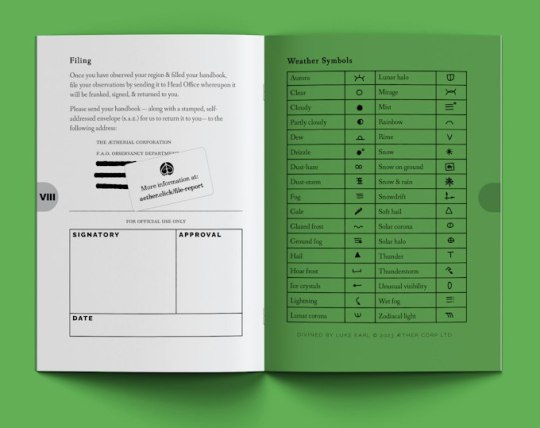
1926 – Communication
While we looked upward, we didn't think to concern ourselves with the growing cacophony in our very own gardens, forests, and fields.
Our mission turns to our leafy neighbours to see if we can understand their speech and intuit their meaning throughout each season.
Additional pages include:
Signs and shapes to look out for
Size estimation chart
List of weather types and symbols for notation

1928 – Giants
From the landscape sprung the flowers, but who formed the landscape? Newly uncovered texts indicate the folklore might be true and giants may have indeed roamed and shaped the earth.
Our mission is to lower our gaze to the ground to identify oddly shaped mounds, mimetoliths (rocks resembling faces), gouged earth, and suspicious urban planning decisions. Under the hills there may be sleeping colossus.
Additional pages include:
Signs to look out for
Common rock types
How to draw landforms & rocks in an isometric fashion

I wanted to shine a light on this project because I met Luke at Dragonmeet in December '23 and fell in love with the way he thinks about RPGs, graphic design and play/ritual/thinking-the-world in his games!
I can't recommend this project enough and I've been waiting excitedly to support it and see it succeed! It really represents everything I think is special about RPGs and the things I also want to explore in this design space *and art movement* and if you have any interest in TTRPGs beyond the scope of dungeon games, Luke is making some of the freshest and most evocative design you can find in the entire medium.
Everything you see here is directly from the kickstarter. Go back it! I promise you'll be glad you did, there are few more unique and inspiring things you could spend your money on in TTRPGs right now!
#ZiMo#zine month#zinequest#indie ttrpg#ttrpg#tabletop#ttrpg design#ttrpg recs#ttrpg dev#tabletop roleplaying#tabletop games#ttrpg community#kickstarter#solo rpg#ttrpg stuff#larp#game design#roleplaying#aethercorp
48 notes
·
View notes
Text
Derrick's 2022 Gameological Awards
Every year on the Gameological Discord, rather than a simple top ten list, we ask what games did what things especially well. Here are my picks in this year's pool...
Game of the Year

Game of the Year means different things to different people. Simply being “the best” is subjective. For me, it’s a matter of which game stuck with me the longest, a game that I couldn’t stop thinking about, a game that captured my imagination and would not let go until I was through. In 2022, no game did that quite like Tunic. A gorgeous isometric action-rpg heavily inspired by classic The Legend of Zelda games, Tunic fashions itself as a long-lost retro game. One where the instruction manual has had its pages separated and lost within the world itself, leading players to explore the world with little guidance and literally piece things together as they go. Mysteries on top of mysteries, stretching through the corners of my mind, obsessing for days on end. Tunic is a whole damn journey and no game in 2022 swept me away into its mythology, world-building, and sheer scope quite the way Tunic did.
Single-player GOTY
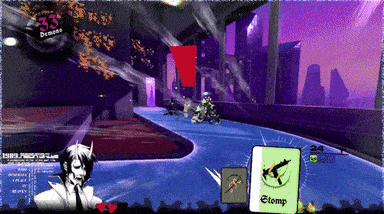
As we continue to blur the lines between the various forms of media, the main detail that separates games from comparable experiences in film and books is that games are about the agency of the player, that the person consuming the media is actively a part of it. It’s easy to escape into lives unlike your own by watching them on the silver screen or reading about them on the page, but games make you FEEL the way a different person might feel. Put aside the dreamy aesthetic, raunchy dialogue, and supernatural conspiracy story… the real star of Neon White was that it made the player feel like a goddamn golden God, launching themselves into the heavens and crashing down on the heads of their foes with righteous justice and unwavering focus. The absolute speed and force of Neon White’s gameplay made every player experience the rush of being a pro gamer, squeezing every last drop of blood out of a game’s throat as you dominated it. Yes, it’s gorgeous and sounds great and all that good stuff, but the adrenaline provided by Neon White was unlike anything else this year.
Multiplayer GOTY

The Splatoon games have lovely and imaginative single-player campaigns, but let’s be real, the franchise is all about frantic multiplayer paint action. Splatoon 3 is the least innovative game in the series so far, but that doesn’t make it any less joyous an experience to hop online with some friends or make some new ones while painting the town [insert your randomly assigned team color here]. New personalization features like SplatTags and lockers, along with games-as-service inspired seasonal catalogs and an always-on upgrade to Splatoon 2’s Salmon Run, Splatoon 3 is constantly hitting players with reasons to keep coming back for more.
Favorite Replay

The Stanley Parable remains an iconic experience from the previous decade’s golden era of indie games. It introduced countless impressionable gamers worldwide to the concept of metatextual narratives within gameplay and the relationship between the player’s choice and the creator’s voice. It was all set to remain a once-in-a-lifetime exploration of interactive media, right up until this year’s release of The Stanley Parable Ultra Deluxe, a game that was, on the surface, a modern remaster of a decade-old PC game for modern hardware and consoles, but was secretly a stealth sequel with even more to say about the current gaming landscape. While the original Stanley Parable was happy to direct a mirror at gamers to make them question the choices they make when they consume media of any kind, the additional new areas of Ultra Deluxe raise new questions and concerns about the game industry and the ways that video games are designed, consumed, critiqued, discussed, and ultimately tossed aside. The revelatory experience revealed more than ever before, and remained effortlessly hilarious all along the way.
Didn't Click Award

Going into 2022, there was no game I was more hyped for than OlliOlli World. The first two entries into the side-scrolling skateboard trick-em-up were damn near perfect. Perfectly at home on the Playstation Vita, they were tight, thrilling, and oh-so-stylish. A long-awaited sequel was just so exciting, and the new Adventure Time-inspired aesthetic had a ton of potential, along with the ability to finally design your own skater and express yourself through fashion and gear. The only problem was… the gameplay never quite CLICKED. What was so magical about the previous games was how responsive the controls were. Just like Super Meat Boy assured people that, if they died, it was their own mistake and not the game’s controls, OlliOlli 1 and 2 both had immaculate precision with the skateboard controls. OlliOlli World did not. Controls are floaty and imprecise, sometimes it felt like the game just decided you didn’t jump in time or didn’t grab correctly. Without that precision, OlliOlli World just never felt right, and no matter how many times I tried, I just never connected with it the way I had with its predecessors.
Most Forgettable Award
youtube
Netflix made its first proper foray into game publishing this year, along with its first showing at the not-E3 “Summer Games Fest,” where they announced plenty of successful licensed games coming to mobile devices via Netflix, several Netflix streaming projects based on popular video games, and most notably surprise-dropped a new Netflix-exclusive game from the creator of Downwell. “Poinpy” instantly trended on social media as gamers laughed about the humorously named vertical platformer, and as one would expect from the creator of Downwell, the game showed a surprising amount of depth and strategy. That said, I only played the game maybe three or four times that first week and then it lay idle on my home screen for months before I finally just deleted it. Poinpy was certainly a thing… but only for a hot minute.
(In)famous Award
youtube
Social media could not get enough videos of the viral sensation Trombone Champ, a rhythm game played by sliding up and down the screen like pushing and pulling the slide of a trombone. People loved adding silly songs or viral audio clips and making Trombone Champ levels out of them. I have no idea if the game is fun because frankly I have no interest in playing it. The videos were funny for a while, but really, they just felt like yet another meme, just one that happened to be centered around this silly game.
Unexpected Joy

With an uninspired name like Vampire Survivors, a nondescript retro pixel art style, and the increasingly tired “rogue-like” label, I had absolutely no interest in what seemed like yet another flash-in-the-pan indie sensation. And then they went and dropped a free mobile port during The Game Awards and I was like “eh, what harm could it do?” And then I drained my phone’s battery twice a day for a week, completely addicted to its game loop. As much as the game lazily lifts from rogue-likes and bullet-hell shmups, it brilliantly and expertly lifts from idle games and clickers. The end result is a remarkably passive game that steadily makes you feel more and more like an unstoppable machine of divine power. It’s incredible and has no right being this good.
Best Music
youtube
Melatonin only just came out a few days ago, so I haven’t had enough time with it to really consider it for titles like GOTY, but I can already say that this Rhythm Heaven-inspired minigame collection absolutely nails its inspiration when it comes to hooky melodies with toe-tapping beats. More than anything else, a rhythm game has got to have compelling music to keep you playing, and there is no doubt that Melatonin has that in spades.
Favorite Game Encounter

There were several fascinating encounters in my GOTY pick, Tunic, from enormous mechanized sentinels to flittering joyous fairies, but nothing this year came close to The Mountain Door. If you’ve played Tunic, you know. Opening The Mountain Door is a puzzle that literally spans the entire breadth of the gaming experience in ways that I still get excited about just remembering months after the fact. It requires using all of the knowledge you’ve collected along the way to explore, examine, and rethink dozens of smaller puzzles that culminate in one euphoric victory. And it’s still not even the end of the game!
Best DLC of the Year
youtube
Little Inferno was the unlikeliest smash hit of the Wii U launch library, and proved to be an absolute delight when it came to PC and mobile devices. Equal parts idle game, passive toy, and black comedy narrative adventure, the game remains a truly special oddball indie romp. Ten years after its initial release, in Fall 2022, players were surprised with its first DLC—Little Inferno Ho Ho Holiday—taking the game’s already explicit anti-consumerism bent and applying it specifically to that most commercial time of the year: festive winter holidays. What an unexpected joy!
"Waiting for Game-dot"
youtube
Disco Elysium. I know. I KNOW. It’s been sitting in my library for years now. I’ll get there someday.
Game that Made Me Think
youtube
I continue to find Sam Barlow fascinating as a game creator. He and David Cage are the two directors most experimenting with the rapidly blurring line between cinema and game, and his latest title, Immortality, blurs that line even further by actually just being about movies. The game is, essentially, three feature-length films, broken up into reels and rehearsals and behind the scenes footage for players to scrub through and explore, and even more than his previous efforts Her Story and Telling Lies, Immortality really bonks players over the head with "THAT WAS IMPORTANT" by disrupting the footage in jarring ways that I don’t want to discuss in case people want to enjoy the game unspoiled. It’s not my favorite of his titles, and I had a harder time investing in the characters than his other works, but from an interactive standpoint, Immortality pushes boundaries in fascinating ways that I couldn’t stop thinking about, even when I no longer really cared about the game’s mysteries.
Girlfriend Reviews Award
youtube
The last major feature update Harmonix’s Fuser got in 2021 added a “Diamond Stage” where users could buy spots on the bill and mix tracks live to a global streaming audience. As the game steadily died through 2022—first with an end to new DLC tracks, then the decline of weekly challenges, and finally online services being shuttered just this week—but even when the game didn’t compel me to come back and play more, the Diamond Stage kept me hooked on the official Fuser Twitch stream, enjoying endless mixes by players spinning live at all times. The stage is finally closed now, leaving legacy players to their own devices to play locally and share mixes as one-offs rather than real-time collaborations, but for half of the game’s short life-span, we had a lovely dance party available to us 24/7 we could all share together.
WILDCARD

Kirby and the Forgotten Land is just too good a game to not mention at all. It’s the best Kirby game since Super Star, which is very possibly one of the greatest video games of all time. It’s also, somehow, the first mainline Kirby platform adventure on a three-dimensional axis, something that other Nintendo icons Mario and Zelda did back on the N64 and Metroid did on the GameCube, all while Kirby kept happily within the confines of flat two-dimensional platforming (aside from some spin-offs like Air Ride, Blowout Blast, and Dream Course). Not content to simply mimic foes by stealing their powers, this time Kirby would take on the characteristics of inanimate objects in the world, becoming a car, a vending machine, a staircase, and more. The game ends with a spectacular over-the-top battle that feels like it belongs in Bayonetta, not the unassuming pink puffball that is Kirby, but it all works! Hell, this game gives Kirby a gun, AND IT WORKS!!! On paper, nothing about this game makes sense, but in practice, it freakin’ rules. If this is what 3D Kirby games are going to be like, I can’t wait to see what’s next.
#video games#videogames#2022#gameological awards#kirby#kirby and the forgotten land#tunic#neon white#fuser#splatoon#splatoon 3#immortality#sam barlow#the stanley parable#vampire survivors#olliolli world#poinpy#trombone champ#little inferno#melatonin#Youtube
30 notes
·
View notes
Note
i’ve followed you for so long and i adore your art! recently nostalgia has been tugging at my heartstrings for the days that google was just filled with pixel computer wallpapers and doll makers, and your blog helps to scratch that itch lol. i’m an illustration student, and i’ve been debating getting into pixel art for a long time, but it’s always been super intimidating and i’ve never known where to start.
anyway, thanks for the inspiration! <3
thank you so much for this lovely message!! what a high complement ♡ what more could i ask for!
these days instagram/tiktok keeps sending me down rabbit holes of 00s nostalgia and i have been feeling the pangs as well.
pixel art can be very intimidating because there are so so many genius artists out there, amateur and professional, but i think it’s super worthwhile because it’s something that you definitely get better at the more times that you work at it!
maybe start off with a style that has a lot of defined rules, like isometric or landscapes, or limit yourself to a tiny palette and small dimensions and see what you can do with it. keep at it and in time you’ll find you’re making some great stuff!
9 notes
·
View notes
Note
J want ypu to know that this is my favourite ever reblog

It WAS so adorable. I love your little isometric doodles. I want them as landscapes in Minecraft, lmao.
2 notes
·
View notes
Text
August ‘20
Ruiner
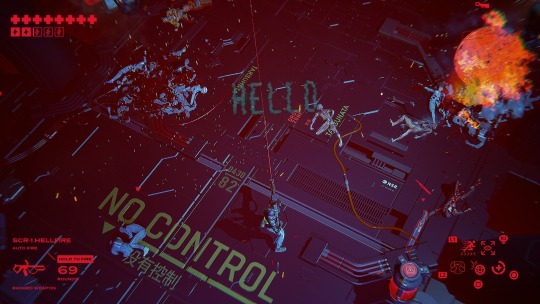
Ruiner frames its action at an isometric tilt. There’s a lot of red; in the game’s interface, as the prominent colour of the neon lighting that adorns its stages, and in the blood that is frequently spilled. Its cyberpunk setting isn’t anything particularly new, but as a unifying aesthetic, the glitchy effects, and out-there personalities doing their best to cope in a dystopia do well to build a convincing and intriguing world. Stages are action packed and throb with electronic noise and big loud industrial bass hits, with the play being akin to an arena shooter; enemies surging at you in bite size, minute-at-a-time waves, with each of these closing out with a grading screen serving as the pat on the back to keep that dopamine rhythm pulsing. It’s a pretty hypnotic cocktail.
These stages evolve out of a singular hub city, and while it’s not particularly big, there’s just the right level of hubbub, and it has a lovely Hirusawa Susumu track acting as an excellent, melancholic mood-setter. Based on the size of its world and the the quick-fire action being split between a very small number of stages, it’s not surprising to say it’s fairly brief - I mean, how could it get so big? But what is important is that it’s plenty of fun and and has style by the bucketload. I got a good kick out of it.
Carrion
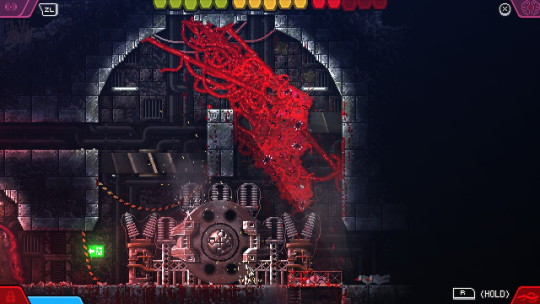
On one hand, a horror game where you play the horror is just the kind of flip on a genre that’s needed to freshen things up a bit. On the other, it’s one straight out of the spoof ‘Peter Molydeux’ playbook. What a carri-on.
... I’m sorry. After your initial escape from a lab, Carrion centres around a hub world, with individual stages then breaking off to allow for more specific themed stages. What you’re trying to do within these is to spread your big, goopy self around, where certain spots will act as save points but also count toward unlocking an alternative path back to the hub and opening up new routes in the process. What’s unique to this particular metroidvania take is that while there are new skills that open up new routes, your movement in general is uniquely freeform - point in a direction and off you go, free of any worries about platforming and the gravity that’d otherwise bind you. While it may not be the most precise movement given the size to which you grow - and boy does this become a point during some forms of combat - it does remain responsive, and quite fun to simply shamble about like a giant congealed blob of bloody, multi-toothed sinew-y mess. Everything scales up nicely on both sides of the fighting, with distraught pistol-equipped humans turning to shielded folks with flamethrowers, all the way up to drones and mechs that are just as mobile and / or deadly as yourself, even in spite of your own upgrades that allow for more ranged, varied, and sharper extremities. It’s not especially long, and is never so taxing as to demand too much expertise of you, but it is fun and importantly, quite unlike anything else out there.
Yoku’s Island Express
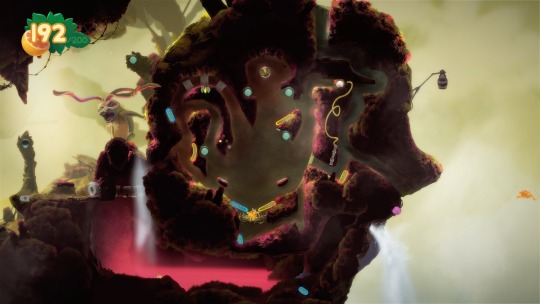
Pinball continues to feel like a lost art form to me, with the nuance of skilled play being more like a foreign language than another type of game you can easily pick up. Yoku, newly-appointed postmaster, is but a tiny little bug, and as such is indebted to these skills in his efforts to travel and clamber about an environment much larger than he. Flippers are casually littered about to shoot you from one area to the next, but there’s also plenty of sections you’re led to by the story that are small yet just detailed enough to play like a neatly sectioned off area of a complete table - complete with requirements for precise shots to move forward, and those inevitable moments where you have to sit back and watch as your ball falls with miserable, exacting precision between the flippers. Failure typically sets you back a few pickups, but given these are just as quickly re-earned, you’re never punished too hard - there’s certainly no three strikes and out mentality here. It’s a very friendly interpretation of pinball’s mechanics, and there’s a decent enough story layered on top, with its characters and art demonstrating enough pleasant charm that you can definitely see this being a great way to introduce pinball to a younger audience. That’s not to say it’s not enjoyable from an older player’s point of view - just that you know what’s being presented is a wisely palatable version of a classic hobby, rather than the arse-kicking ordeal you may be used to.
Rime
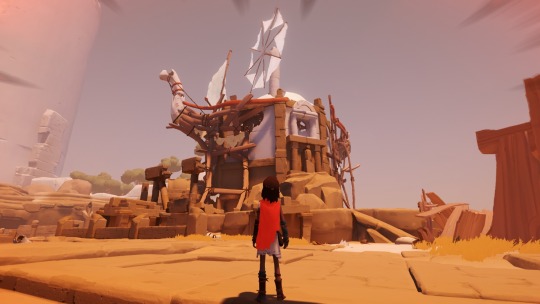
I am certain that Rime would love me to compare it to a certain Fumito Ueda PS2 game. There’s the ultra-minimal scene that’s set as a boy washes up on an island; a sparse, beautiful, somewhat Mediterranean set of landscapes, and with very few ways to interact with it all that don’t involve clambering over things or shouting out in wordless desperation. But as you’ll have noted, I haven’t found it in myself to justify using that game’s name here.
As much as I wanted to give this a chance, it often felt directionless, uninspired, and at worst, slow and tedious. The puzzles are derivative of any number of games I’ve played before, and the biggest danger is that you might assume as to their difficulty and over-engineer your approach, rather than not be able to tackle them. The platforming is simplistic and regularly drawn out with ledges, ledges, and more ledges to climb across and dangle from; even if you were to find a way to fall to your doom, as is tempting, it is unlikely to take you back much further than a few seconds. Crucially, there’s really very little to sink your teeth into on any front, and even when the game does finally start to weave some plot threads into the game’s canvas, it’s well into the latter half - long after I’d already racked my brains for any hint of an allegory that’d fit, and given up on expecting one. Sadly, to the point that the actual story felt like a cheap afterthought when it did finally start to unravel. This bounced off me much harder than I’d expected - I came away wishing it had forged a bit more of an identity and a purpose rather than just an aesthetic strung together with some weak elements of play.
If Found

As far as interactive elements in visual novel-type games go, If Found has a different approach to most. The story’s primarily told by means of a diary - one that’s full of witty observations, personal reflections and enigmatic sketches - that you actively erase as a means to push events along. The diary belongs to Kasio, a trans girl returning to their small Irish hometown after a stint away at university in the city; a return that’s not met in the warmest or most understanding fashion. As a mechanic, the erasure of this diary is loaded with meaning; peeling back layers of a scene often matches a more poignant set of observations, and the scrubbing of such personal details away offers a painful reflection on an identity being chipped away at. It’s very much a story about finding one’s self, about coming of age, and as it rides these highs and lows it does an excellent job in making you ride along these alongside the characters, and it does one hell of a job to make you think about the compassion that you both see and offer in the world outside. I’ll put my hands up and say that there are some elements of the story running in parallel to this main one that didn’t gel with me quite so well, but this is a minor footnote to an otherwise highly enjoyable play through. In a short space of time, Annapurna have done a great job in winning me over with their publishing choices - particularly in holding up the kinds of voices and ideas that fit these smaller titles so perfectly.
Double Kick Heroes
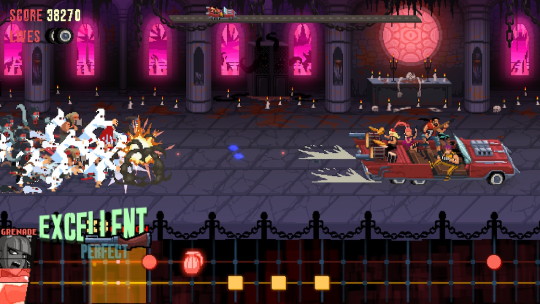
It’s a rhythm game. I like rhythm games! It’s about a zombie apocalypse. Oh no. It’s... a heavy metal rhythm game? Ok, maybe we can work with this.
After a trailer name dropping a bunch of familiar artists - Jinjer, Carpenter Brut, Gojira - what surprised me straight off was that none of these licensed artists featured in the game’s story mode. They’re all sectioned off in a separate menu, and while on the bright side they’ve each given a unique stage with a visual theming in keeping with the bands in question, it feels like a bit of a missed opportunity. Instead, all tracks throughout the story were composed by just one person, and with only a small handful of featured musicians being included to diversify things. It starts with more (arguably) palatable hard rock numbers, but goes up to and includes grindcore, death metal, black metal and the like, meaning that not only is it going to put a lot of folks off right away, but that it’s asking a heck of a lot for one composer to cover all of these sub-genres with the appropriate care. While it was refreshing to hear some types of music I’d normally not expect to hear in a game, some tracks inevitably grated, and while I enjoyed some others, I wasn’t ever bowled over too strongly either.
The story itself is fairly by the numbers. It sees an on-tour band fighting back against a zombie uprising, and has unsubtle references to any number of heavy artists, albums and songs shoe-horned in at every opportunity. It also bears the hallmarks of its dialogue being written by someone that has a very particular sense of humour which personally all fell very flat. While the team undoubtably do love music, the over-enthusiastic style rubbed me in a similarly uncomfortable fashion as Jack Black does regularly, with his half-comedian, half-musician schtick. The gameplay itself is based around the drum parts of its songs also corresponding to different weaponry on your car that holds the hordes back, and while this on its own can prove tricky, higher difficulties also mounts other expectations - like steering your vehicle, or alternating pedals to shoot different parts of the screen. Some of my frustration with all of this is likely my own fault for having chosen to play on the ‘Hard’ difficulty, but traditional wisdom feels a little bit lost when you can still get damaged when your combo meter is racked up well into triple digits.
In all, Double Kick Heroes presented some pretty unique gaming scenarios; like having to work out the best controller configuration to play blast beats with, or asking out loud “did I just hear the words ‘we are Genital Absolution’ coming from a Nintendo console?”, and it’s clearly a small team working on something they really care about. I respect that. I didn’t enjoy it as much as I was hoping, but I hope they’re proud of what they’ve created.
Manifold Garden

A puzzle game taking significant inspiration from the works of M.C. Escher is a pretty good starting point in my eyes. It being presented in a wonderful manner certainly doesn’t harm either; from the UI all the way into the game, it’s beautifully clean and defined, opting for delicate shading rather than messy textures, and with its intricate, recursive geometric patterns, you’ll likely find cause to stop and take stock on a regular basis.
One button looks after your basic interactions with the world (pushing, picking up, and so on), with your other crucial way of interacting with the world being the ability to approach a surface and then assign it as ‘the new down’ - spinning everything about an axis, planting your feet to it, and changing your perspective on everything. There’s a nice steady introduction of puzzle pieces as you ease your way in, but they all stem gracefully from these simple mechanics. That I - not the world’s greatest puzzle gamer - was able to enjoy this without every getting too stuck may hint at it perhaps not being as complex as some puzzle fiends might desire, however this amounted to me coming out the other side with great waves of satisfaction, and nought but positives to say. I would go so far as to say that it’s the most fun I’ve had playing a puzzle game in a long, long time, and to boot it’s also perhaps the game where I’ve used the screenshot button the most copiously. Wonderful stuff.
1 note
·
View note
Photo








Some really good entries came out of the Official /r/PixelArt Contest over on Reddit. From top to bottom, 1st place went to John Baker a.k.a. fawff for an amusing forest illustration, The Big Heist by Carmelcamel placed 2nd with just as amusing Statue of Liberty robbery, and in 3rd we had the Vintage Circus Poster by earthtotem11 a.k.a. KDM Games.
The rest of the images above (selected by me from unranked entries) feature IIPorkinsII (cloudy sunset), ciberaj (isometric pool), SaevaSilva (cliff landscape), mondomando (fighter jets), and Noël Kalunder a.k.a. JustStayYourself (Mario in trouble).
The complete list of entries can be seen in the lovely video put together by /r/PixelArt moderator @skeddles:
youtube
I like that the requirements were very tightly specified (256×256px, @namatnieks’ NA16 palette) since it ties the entries together into a very cohesive showcase.
Besides the static images there was also an animated category (20 frames, 100×100px, Arne’s Famicube palette) with the win going to AgiHammerthief for the illustration of dwarves forging Mjolnir, the hammer of Thor:

162 notes
·
View notes
Text
Growing Pains - Zelda, Tony Hawk, The Sims, games and related memories from my formative years
This blog post is about my personal history with video games, how they influenced me growing up, how they sometimes helped me, and more or less an excuse to write about associated memories with them.
This is a very straightforward intro, because I’ve had this post sitting as a draft for ages, trying to glue all of it cohesively, but I’m not a very good writer, so I never really succeeded. Some of these paragraphs date back at least one year.
And I figured I should write about a lot of this as long as I still remember clearly, or not too inaccurately. Because I know that I don’t remember my earliest ever memory. I only remember how I remember it. So I might as well help my future self here, and give myself a good memento.
Anyway, the post is a kilometer long, so it’ll be under this cut.

My family got a Windows 95 computer when I was 3 years old. While I don’t remember this personally, I’m told that one of the first things I ever did with it was mess up with the BIOS settings so badly that dad’s computer-expert friend had to be invited to repair it. (He stayed for dinner as a thank you.)
It was that off-white plastic tower, it had a turbo button, and even a 4X CD reader! Wow! And the CRT monitor must have been... I don’t remember what it was, actually. But I do once remember launching a game at a stupidly high resolution: 1280x1024! And despite being a top-down 2D strategy, it ran VERY slowly. Its video card was an ATI Rage. I had no idea what that really meant that at the time, but I do recall that detail nonetheless.
Along with legitimately purchased games, the list of which I can remember:
Tubular Worlds
Descent II
Alone in the Dark I & III
Lost Eden
Formula One (not sure which game exactly)
Heart of Darkness
(and of course the famous Adibou/Adi series of educational games)
... we also had what I realize today were cracked/pirated games, from the work-friend that had set up the family computer. I remember the following:
Age of Empires I (not sure about that one, I think it might have been from a legitimate “Microsoft Plus!” disc)
Nightmare Creatures (yep, there was a PC port of that game)
Earthworm Jim (but without any music)
The Fifth Element
Moto Racer II
There are a few other memorable games, which were memorable in most aspects, except their name. I just cannot remember their name. And believe me, I have looked. Too bad! Anyway, in this list, I can point out a couple games that made a big mark on me.
First, the Alone in the Dark trilogy. It took me a long time to beat them. I still remember the morning I beat the third game. I think it was in 2001 or 2002.
youtube
There was a specific death in it which gave me nightmares for a week. You shrink yourself to fit through a crack in a wall, but it’s possible to let a timer run out—or fall down a hole—and this terrifying thing happens (16:03). I remember sometimes struggling to run the game for no reason; something about DOS Extended Memory being too small.
I really like the low-poly flat-shaded 3D + hand-drawn 2D style of the game, and it’d be really cool to see something like that pop up again. After the 8-bit/16-bit trend, there’s now more and more games paying tribute to rough PS1-style 3D, so maybe this will happen? Maybe I’ll have to do it myself? Who knows!
Second, Lost Eden gave me a taste for adventure and good music, and outlandish fantasy universes. Here’s the intro to the game:
youtube
A lot of the game is very evocative, especially its gorgeous soundtrack, and you spend a lot of time trekking through somewhat empty renders of landscapes. Despite being very rough early pre-rendered 3D, those places were an incredible journey in my young eyes. If you have some time, I suggest either playing the game (it’s available on Steam) or watching / skimmering through this “longplay” video. Here are some of my personal highlights: 25:35, 38:05, 52:15 (love that landscape), 1:17:20, 1:20:20 (another landscape burned in my neurons), 2:12:10, 2:55:30, 3:01:18. (spoiler warning)
But let’s go a couple years back. Ever since my youngest years, I was very intrigued by creation. I filled entire pocket-sized notebooks with writing—sometimes attempts at fiction, sometimes daily logs like the weather reports from the newspaper, sometimes really bad attempts at drawing. I also filled entire audio tapes over and over and OVER with “fake shows” that my sister and I would act out. The only thing that survived is this picture of 3-year-old me with the tape player/recorder.
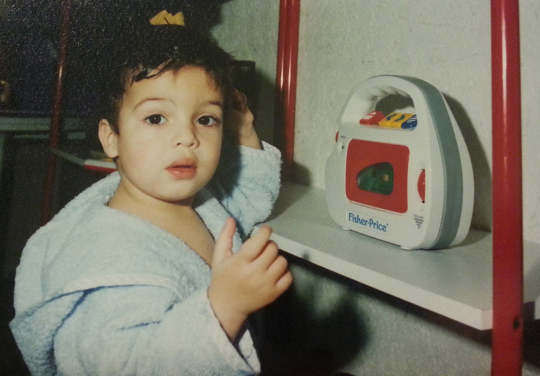
It also turns out that the tape recorder AND the shelf have both survived.
(I don’t know if it still works.)
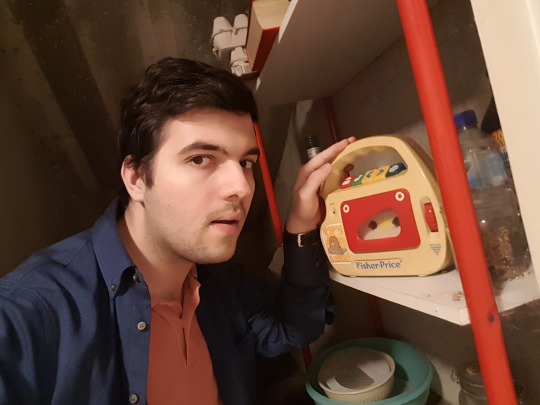
On Wednesday afternoons (school was off) and on the week-ends, I often got to play on the family computer, most of the time with my older brother, who’s the one who introduced me to... well... all of it, really. (Looking back on the games he bought, I can say he had very good tastes.)
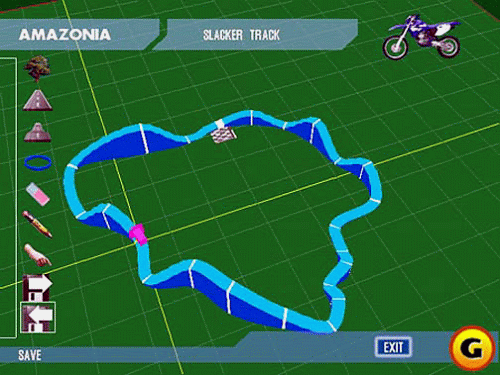
Moto Racer II came with a track editor. It was simple but pretty cool to play around with. You just had to make the track path and elevation; all the scenery was generated by the game. You could draw impossible tracks that overlapped themselves, but the editor wouldn’t let you save them. However, I found out there was a way to play/save them no matter what you did, and I got to experiment with crazy glitches. 85 degree inclines that launched the bike so high you couldn’t see the ground anymore? No problem. Tracks that overlapped themselves several times, causing very strange behaviour at the meeting points? You bet. That stuff made me really curious about how video games worked. I think a lot of my initial interest in games can be traced back to that one moment I figured out how to exploit the track editor...
There was also another game—I think it was Tubular Worlds—that came on floppy disks. I don’t remember what exactly lead me to do it, but I managed to edit the text that was displayed by the installer... I think it was the license agreement bit of it. That got me even more curious as to how computers worked.
Up until some time around my 13th or 14th birthday, during summer break (the last days of June to the first days of September for French pupils), my sister and I would always go on vacation at my grandparents’ home.
The very first console game I ever played was The Legend of Zelda: A Link to the Past on my cousin’s Super Nintendo, who also usually stayed with us. Unlike us, he had quite a few consoles available to him, and brought a couple along. My first time watching and playing this game was absolutely mind-blowing to me. An adventure with a huge game world to explore, so many mysterious things at every corner. “Why are you a pink rabbit now?” “I’m looking for the pearl that will help me not be that.”
Growing up and working in the games industry has taken the magic out of many things in video games... and my curiosity for the medium (and its inner workings) definitely hasn’t helped. I know more obscure technical trivia about older games than I care to admit. But I think this is what is shaping my tastes in video games nowadays... part of it is that I crave story-rich experiences that can bring me back to a, for lack of a better term, “child-like” wonderment. And I know how weird this is going to sound, but I don’t really enjoy “pure gameplay” games as much for that reason. Some of the high-concept ones are great, of course (e.g. Tetris), but I usually can’t enjoy others without a good interwoven narrative. I can’t imagine I would have completed The Talos Principle had it consisted purely of the puzzles without any narrative beats, story bits, and all that. What I’m getting at is, thinking about it, I guess I tend to value the “narrative” side of games pretty highly, because, to me, it’s one of the aspects of the medium that, even if distillable to some formulas, is inherently way more “vague” and “ungraspable”. You can do disassembly on game mechanics and figure out even the most obsure bits of weird technical trivia. You can’t do that to a plot, a universe, characters, etc. or at least nowhere near to the same extent.
You can take a good story and weave it into a number of games, but the opposite is not true. It’s easy to figure out the inner working of gameplay mechanics, and take the magic out of them, but it’s a lot harder to do that for a story, unless it’s fundamentally flawed in some way.
Video games back then seemed a lot bigger than they actually were.
youtube
I got Heart of Darkness as a gift in 1998 or 1999. We used to celebrate Christmas at my grandparents’, so I had to wait a few days to be back home, and to able to put the CD in the computer. But boy was it worth it! Those animated cutscenes! The amazing pixel art animations! The amazing and somewhat disturbing variety of ways in which you can die, most of which gruesome and mildly graphic! And of course, yet again... a strange and outlandish universe that just scratches my itch for it. Well, one of which that forged my taste for them.
I can’t remember exactly when it happened or what it was, but I do remember that at some point we visited some sort of... exposition? Exhibit? Something along those lines. And it had a board games & computer games section. The two that stick out in my mind were Abalone (of which I still have the box somewhere) and what I think was some sort of 2D isometric (MMO?) RPG. I wanna say it was Ultima Online but I recall it looking more primitive than that (it had small maps whose “void” outside them was a single blueish color).
In my last two years of elementary school, there was one big field trip per year. They lasted two weeks, away from family. The first one was to the Alps. The second one was... not too far from where I live now, somewhere on the coast of Brittany! I have tried really hard to find out exactly where it was, as I remember the building and facilities really well, but I was never able to find it again. On a couple occasions, we went on a boat with some kind of... algae harvesters? The smell was extremely strong (burning itself into my memory) and made me sick. The reason I bring them up is because quite a few of my classmates had Game Boy consoles, most of them with, you know, all those accessories, especially the little lights. I remember being amazed at the transparent ones. Play was usually during the off-times, and I watched what my friends were up to, with, of course, a bit of jealousy mixed in. The class traveled by bus, and it took off in the middle of the night; something like 3 or 4 in the morning? It seemed like such a huge deal at the time! Now here I am, writing THESE WORDS at 03:00. Anyway, most of my classmates didn’t fall back asleep and those that had a Game Boy just started playing on them. One of my classmates, however, handed me his whole kit and I got to do pretty much what I wanted with it, with the express condition that I would not overwrite any of his save files. I remember getting reasonably far in Pokémon before I had to give it back to him and my progress was wiped.
During the trip to the Alps, I remember seeing older kids paying for computer time; there was a row of five computers in a small room... and they played Counter-Strike. I had absolutely no idea what it was, and I would forget about it until the moment I’m writing these words, but I was watching with much curiosity.
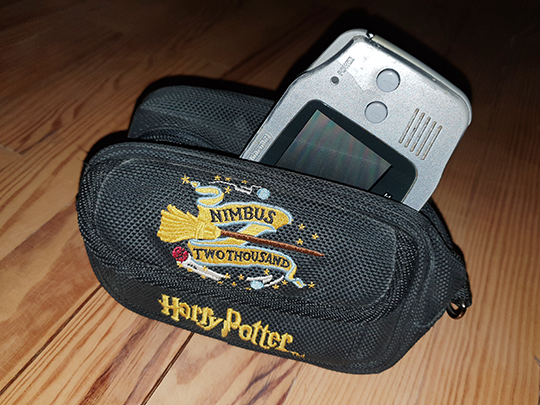
The first time I had my own access to console games was in 2001. The first Harry Potter film had just come out, and at Christmas, I was gifted a Game Boy Advance with the first official game. I just looked it up again and good god, it’s rougher than I remember. The three most memorable GBA games which I then got to play were both Golden Sun(s) and Sword of Mana... especially the latter, with its gorgeous art direction. My dad had a cellphone back then, and I remember sneakily going on there to look up a walkthrough for a tricky part of Golden Sun’s desert bit. Cellphones had access to something called “WAP” internet... very basic stuff, but of course still incredible to me back then.
I eventually got to play another Zelda game on my GBA: Link’s Awakening DX. I have very fond memories of that one because I was bed-ridden with a terrible flu. My fever ran so high that I started having some really funky dreams, delirious half-awake hallucinations/feelings, and one night, I got so hot that I stumbled out of bed and just laid down against the cold tile of the hallway. At 3 in the morning! A crazy time! (Crazy for 11-year-old me.)
(The fever hallucinations were crazy. My bedroom felt like it was three times at big, and I was convinced that a pack of elephants were charging at me from the opposite corner. The “night grain” of my vision felt sharper, amplified. Every touch, my sore body rubbing against the bed covers felt like it was happening twice as much. You know that “Heavy Rain with 300% facial animation” video? Imagine that, but as a feverish feeling. The dreams were on another level entirely. I could spend pages on them, but suffice to say that’s when I had my first dream where I dreamed of dying. There were at least two, actually. The first one was by walking down a strange, blueish metal corridor, then getting in an elevator, and then feeling that intimate convinction that it was leading me to passing over. The second one was in some Myst-like world, straight out of a Roger Dean cover, with some sort of mini-habitat pods floating on a completely undisturbed lake. We were just trapped in them. It just felt like some kind of weird afterlife.)
I also eventually got to play the GBA port of A Link To The Past. My uncle was pretty amused by seeing me play it, as he’d also played the original on SNES before I’d even been born. I asked him for help with a boss (the first Dark World one), but unfortunately, he admitted he didn’t remember much of the game.
We had a skiing holiday around this time. I don’t remember the resort’s or the town’s name, but its sights are burned in my memory. Maybe it’s because, shortly after we arrived, and we went to the ski rental place, I almost fainted and puked on myself, supposedly from the low oxygen. It also turned out that the bedroom my parents had rented unexpectedly came with a SNES in the drawer under the tiny TV. The game: Super Mario World. I got sick at one point and got to stay in and play it. This was also the holiday where I developed a fondness for iced tea, although back then the most common brand left an awful aftertaste in your mouth that just made you even more thirsty.
We got a new PC in December of 2004. Ditching the old Windows 98 SE (yep, the OS had been upgraded in... 2002, I think?). Look at how old-school this looks. The computer office room was in the basement. Even with the blur job that I applied to the monitor for privacy reasons, you can still tell that this is the XP file explorer:
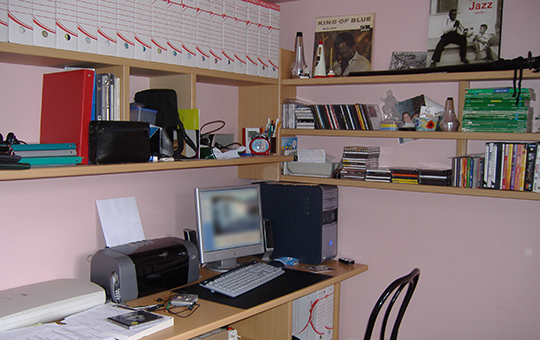
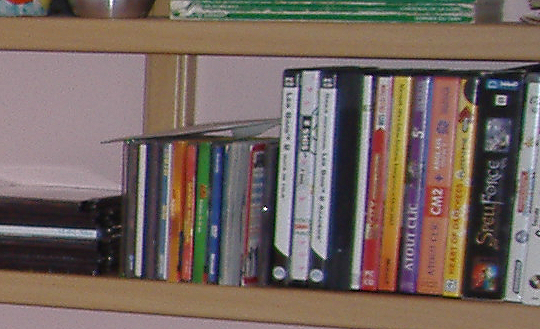
A look at what the old DSLR managed to capture on the shelf reveals some more of the games that were available to me back then: a bunch of educational software, The Sims 2, and SpellForce Gold.
I might be misremembering but I think they were our Christmas gifts for that year; we both got to pick one game. I had no idea what I wanted, really, but out of all the boxes at (what I think was) the local Fnac store, it was SpellForce that stood out to me the most. Having watched Lord of the Rings the year prior might have been a factor. I somewhat understood Age of Empires years before that, but SpellForce? Man, I loved the hell out of SpellForce. Imagine a top-down RPG that can also be played from a third-person perspective. And with the concept of... hero units... wait a second... now that reminds me of Dota.
Imagine playing a Dota hero with lots of micro-management and being able to build a whole base on new maps. And sometimes visiting very RPG-ish sections (my favorites!) with very little top-down strategy bits, towns, etc. like Siltbreaker. I guess this game was somewhat like an alternate, single-player Dota if you look at it from the right angle. (Not the third-person one.)
I do remember being very excited when I found out that it, too, came with a level editor. I never figured it out, though. I only ever got as far as making a nice landscape for my island, and that was it!
A couple weeks after, it was Christmas; my sister and I got our first modern PC game: The Sims 2. It didn’t run super well—most games didn’t, because the nVidia GeForce FX 5200 wasn’t very good. But that didn’t stop me or my sister from going absolutely nuts with the game. This video has the timestamp of 09 January 2005, and it is the first video I’ve ever made with a computer. Less than two weeks after we got the game, I was already neck-deep in creating stuff.
Not that it was particularly good, of course. This is a video that meets all of the “early YouTube Windows Movie Maker clichés”.
youtube
Speaking of YouTube, I did register an account there pretty early on, in August of 2006. I’ve been through all of it. I remember every single layout change. I also started using Sony Vegas around that time. It felt so complex and advanced back then! And I’m still using it today. Besides Windows, Vegas Pro is very likely to be the piece of software that I’ve been using for the longest time.
I don’t have a video on YouTube from before 2009, because I decided to delete all of them out of embarassment. They were mostly Super Mario 64 machinima. It’s as bad as it sounds. The reason I bring that up right now, though, is that it makes the “first” video of my account the last one I made with the Sims 2.
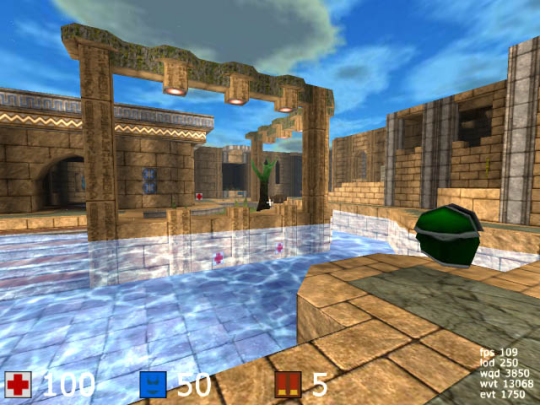
But before I get too far ahead with my early YouTube days, let me go backwards a bit. We got hooked up to the Internet some time in late 2005. It was RTC (dialup), 56 kbps. my first steps into the Internet led me to the Cube engine. Mostly because back then my dad would purchase computer magazines (which were genuinely helpful back then), and came with CDs of common downloadable software for those without Internet connections. One of them linked to Cube. I think it was using either this very same screenshot, or a very similar one, on the same map.
The amazing thing about Cube is not only that it was open-source and moddable, but had map editing built-in the game. The mode was toggled on with a single key press. You could even edit maps cooperatively with other people. Multiplayer mapping! How cool is that?! And the idea of a game that enabled so much creation was amazing to me, so I downloaded it right away. (Over the course of several hours, 30 MiB being large for dialup.)
I made lots of bad maps that never fulfilled the definition of “good level” or “good gameplay”, not having any idea how “game design” meant, or what it even was. But I made places. Places that I could call my own. “Virtual homes”. I still distinctively remember the first map I ever made, even though no trace of it survives to this day. In the second smallest map size possible, I’d made a tower surrounded by a moat and a few smaller cozy towers, with lots of nice colored lighting. This, along with the distinctive skyboxes and intriguing music, made me feel like I’d made my home in a strange new world.
At some point later down the line, I made a kinda-decent singleplayer level. It was very linear, but one of the two lead developers of the game played it and told me he liked it a lot! Of course, half of that statement was probably “to be nice”, but it was really validating and encouraging. And I’m glad they were like that. Because I remember being annoying to some other mappers in the Sauerbraten community (the follow-up to Cube, more advanced technically), who couldn’t wrap their heads around my absolutely god awful texturing work and complete lack of level “design”. Honestly, sometimes, I actually kinda feel like trying to track a couple of them down and being like, “yeah, remember that annoying kid? That was me. Sorry you had to deal with 14-year-old me.”
youtube
At some point, I stumbled upon a mod called Cube Legends. It was a heavily Zelda-inspired “total conversion”; a term reserved for mods that are the moddiest mods and try to take away as much of the original foundation as possible. It featured lots of evocative MIDI music by the Norwegian composer Bjørn Lynne. Fun fact: the .mid files are still available officially from his website!
This was at the crossroad of many of my interests. It was yet another piece of the puzzle. As a quick side note, this is why Zelda is the first series that I name in the title of this post, even though I... never really thought of myself as a Zelda fan. It’s not that it’s one of the game series that I like the most, it’s just that, before I started writing this, I’d never realized how far-reaching its influence had been in my life, both in overt and subtle ways, especially during my formative years.
And despite how clearly unfinished, how much of a “draft” Cube Legends was, I could see what it was trying to do. I could see the author’s intent. And I’m still listening to Bjørn Lynne’s music today.
The Cube Engine and its forums were a big part of why I started speaking English so well. Compared to most French people, I mean. We’re notoriously bad with the English language, and so was I up until then. But having this much hands-on practice proved to be immensely valuable. And so, I can say that the game and its community have therefore had long-lasting impacts in my life.
I also tried out a bunch of N64 games via emulation, bringing me right back in that bedroom at my grandparents’ house, with my cousin. Though he did not have either N64 Zelda game back then.
The first online forum I ever joined was a Zelda fan site’s. There are two noteworthy things to say here:
It was managed by a woman who, during my stay in the community, graduated from her animation degree. At this stage I had absolutely no idea that this was going to be the line of work I would eventually pursue!
I recently ran into the former head moderator of the forums. (I don’t know when the community died.) One of the Dota players on my friends list invited him because I was like “hmm, I wanna go as 3, not as 2 players today”. His nickname very vaguely reminded me of something, a weird hunch I couldn’t place. Half an hour into the game, he said “hey Max... this might be a long shot, but did you ever visit [forum]?” and then I immediately yelled “OH MY GOD—IT IS YOU.” The world is a small place.
Access to the computer was sometimes tricky. I didn’t always have good grades, and of course, “punishment” (not sure the word is appropriate, hence the quotes, but you get the idea) often involved locking me out of the computer room. Of course, most times, I ended up trying to find the key instead. I needed my escape from the real world. (You better believe it’s Tangent Time.)
I was always told I was the “smart kid”, because I “understood things faster” than my classmates. So they made me skip two grades ahead. This made me enter high school at nine years old. The consequences were awful (I was even more of the typical nerdy kid that wouldn’t fit in), and I wish it had never happened. Over the years, I finally understood: I wasn’t more intelligent. I merely had the chance to have been able to grow up with an older brother who’d instilled a sense of curiosity, critical thinking, and taste in books that were ahead of my age and reading level. This situation—and its opposite—is what I believe accounts for the difference in how well kids get to learn. It’s not innate talent, it’s not genetics (as some racists would like you to believe). It’s parenting and privilege.
And that’s why I’ll always be an outspoken proponent for any piece of media that tries to instill critical thinking and curiosity in its viewer, reader, or player.
But I digress.
Well, I’ve been digressing a lot, really, but games aren’t everything and after all, this post is about the context in which I played those games. Otherwise I reckon I would’ve just made a simple list.
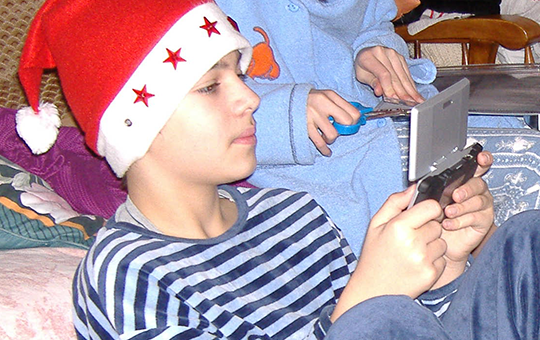
I eventually got a Nintendo DS for Christmas, along with Mario Kart DS. My sister had gotten her own just around the time when it released... she had the Nintendogs bundle. We had also upgraded to proper ADSL, what I think was about a ~5 megabits download speed. The Nintendo DS supported wi-fi, which was still relatively rare compared to today. In fact, Nintendo sold a USB wireless adapter to help with that issue—our ISP-supplied modem-router did not have any wireless capabilities. I couldn’t get it the adapter work and I remember I got help from a really kind stranger who knew a lot about networking—to a point that it seemed like wizardry to me.
I remember I got a “discman” as a gift some time around that point. In fact, I still have it. Check out the stickers I put on it! I think those came from the Sims 2 DVD box and/or one of its add-ons.
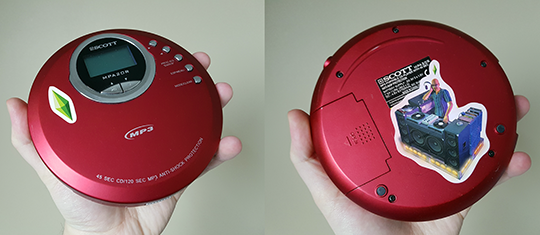
I burned a lot of discs. In fact, in the stack of burned CDs/DVDs that I found (with the really bad Sims movies somewhere in there), I found at least three discs that had the Zelda album Hyrule Symphony burned in, each with different additional tracks. Some were straight-up MIDI files from vgmusic.com...! And speaking (again) of Zelda, when the Wii came out, Twilight Princess utterly blew my mind. I never got the game or the console, but damn did I yearn badly for it. I listened to the main theme of the game a lot, which didn’t help. I eventually got to play the first few hours at a friend’s place.
At some point, we’d upgraded the family computer to something with a bit more horsepower. It had a GeForce 8500 GT inside, which was eventually upgraded to a 9600 GT after the card failed for some reason. It could also dual-boot between XP and Vista. I stuck with that computer until 2011.
We moved to where I currently live in 2007. I’ve been here over a decade! And before we’d even fully finished unpacking, I was on the floor of the room that is now my office, with the computer on the ground and the monitor on a cardboard box, playing a pirated copy of... Half-Life! It was given to me by my cousin. It took me that long to find out about the series. It’s the first Valve game I played. I also later heard about the Orange Box, but mostly about Portal. Which I also pirated and played. I distinctly remember being very puzzled by the options menu: I thought it was glitched or broken, as changing settings froze the game. Turns out the Source engine had to chug for a little while, like a city car in countryside mud, as it reloaded a bunch of stuff. Patience is a virtue...
But then, something serious happened.
In the afternoon of 25 December 2007, I started having a bit of a dull stomach pain. I didn’t think much of it. Figured maybe I’d eaten too many Christmas chocolates and it’d go away. It didn’t. It progressively deteriorated into a high fever where I had trouble walking and my tummy really hurt; especially if you pressed on it. My parents tried to gently get me to eat something nice on New Year’s Eve, but it didn’t stay in very long. I could only feed myself with lemonade and painkiller. Eventually, the doctor decided I should get blood tests done as soon as possible. And I remember that day very clearly.
I was already up at 6:30 in the morning. Back then, The Daily Show aired on the French TV channel Canal+, so I was watching that, lying in the couch while waiting for my mom to get up and drive me to my appointment, at 7:00. It was just two streets away, but there was no way I could walk there. At around noon, the doctor called and told my mom: “get your son to the emergency room now.”
Long story short, part of my intestines nuked themselves into oblivion, causing acute peritonitis. To give you an idea, that’s something with a double-digit fatality rate. Had we waited maybe a day or two more, I would not be here writing this. They kind of blew up. I had an enormous abcess attached to a bunch of my organs. I had to be operated on with only weak local anaesthetics as they tried to start draining the abscess. It is, to date, by far the most painful thing that has ever happened to me. It was bad enough that the hospital doctor that was on my case told me that I was pretty much a case worthy to be in textbooks. I even had medical students come into my hospital room about it! They were very nice.
This whole affair lasted over a month. I became intimately familiar with TV schedules. And thankfully, I had my DS to keep me company. At the time, I was pretty big into the Tony Hawk DS games. They were genuinely good. They had extensive customization, really great replayability, etc. you get the idea. I think I even got pretty high on the online leaderboards at some point. I didn’t have much to do on some days besides lying down in pain while perfecting my scoring and combo strategies. I think Downhill Jam might’ve been my favorite.
My case was bad enough that they were unable to do something due to the sad state of my insides during the last surgery of my stay. I was told that I could come back in a few months for a checkup, and potentially a “cleanup” operation that would fix me up for good. I came back in late June of 2008, got the operation, and... woke up in my hospital room surrounded by, like, nine doctors, and hooked up to a morphine machine that I could trigger on command. Apparently something had gone wrong during the operation, but they never told me what. I wasn’t legally an adult, so they didn’t have to tell me. I suspect it’s somewhere in some medical files, but I never bothered to dig up through my parents’ archives, or ask the hospital. And I think I would rather not know. But anyway, that was almost three more weeks in the hospital. And it sucked even more that time because, you see, hospital beds do not “breathe” like regular beds do. The air can’t go through. Let’s say I’m intimately familiar with the smell of back sweat forever.
When I got out, my mom stopped by a supermarket on the way home. And that is when I bought The Orange Box, completely on a whim, and made my Steam account. Why? Because it was orange and stood out on the shelf.
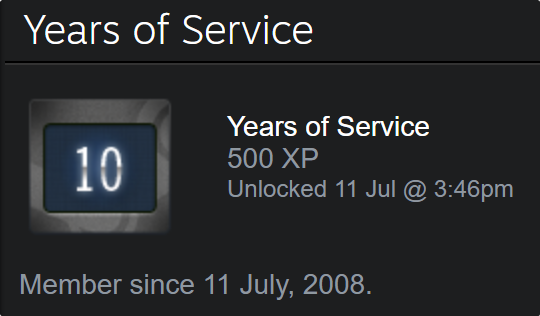
(As a side note, that was the whole bit I started writing first, and that made me initially title this post “growing pains”. First, because I’m bad at titles. Second, because not that I didn’t have them otherwise (ow oof ouch my knees), but that was literally the most painful episode of my entire life thus far and it ended in a comically-unrelated, high-impact, life-changing decision. Just me picking up The Orange Box after two awful hospital stays... led me to where I am today.)
While I was recovering, I also started playing EarthBound! Another bit of a life-changer, that one. To a lesser extent, but still. I was immediately enamored by its unique tone. Giygas really really really creeped me out for a while afterwards though. I still get unsettled if I hear its noises sometimes.
I later bought Garry’s Mod (after convincing my mom that it was a “great creative toolbox that only cost ten bucks!”), and, well, the rest is history. By which I mean, a lot of my work and gaming activity since 2009 is still up and browsable. But there are still a few things to talk about.
In 2009, I bought my first computer with YouTube ad money: the Asus eee PC 1005HA-H. By modern standards, it’s... not very powerful. The processor in my current desktop machine is nearly 50 times as fast as its Atom N280. It had only one gigabyte of RAM, Windows 7 Basic Edition, and an integrated GPU barely worthy of the name; Intel didn’t care much for 3D in their chips back then. The GMA 945 didn’t even have hardware support for Transform & Lighting.
But I made it work, damn it. I made that machine run so much stuff. I played countless Half-Life and Half-Life 2 mods on it—though, due to the CPU overhead on geometry, some of those were trickier. I think one of the most memorable ones I played was Mistake of Pythagoras; very surreal, very rough, but I still remember it so clearly. I later played The Longest Journey on it, in the middle of winter. It was a very cozy and memorable experience. (And another one that’s an adventure wonderful outlandish alien universe. LOVE THOSE.)
I did more than playing games on it, though...
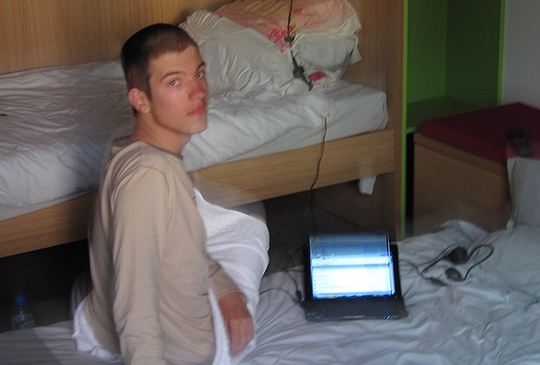
This is me sitting, sunburned on the nose, in an apartment room, on 06 August 2010. This was in the Pyrénées, at the border between France and Spain. We had a vacation with daily hiking. Some of the landscapes we visited reminded me very strongly of those from Lost Eden, way up the page...
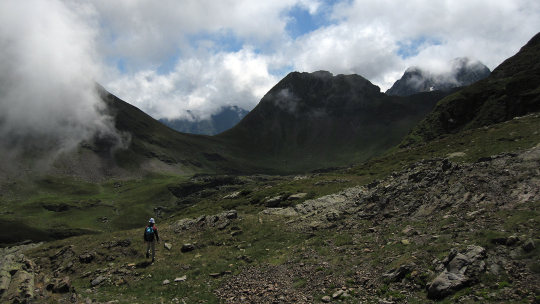
So, you see, I had 3ds Max running on that machine. The Source SDK as well. Sony Vegas. All of it was slow; you bet I had to use some workarounds to squeeze performance out of software, and that I had to keep a close, watchful eye on RAM usage. But I worked on this thing. I really did! I animated this video’s facial animation bits (warning: this is old & bad) on the eee PC, during the evenings of the trip, when we were back at our accomodation. The Faceposer tool in the Source SDK really worked well on that machine.
I also animated an entire video solely on the machine (warning: also old and bad). It had to be rendered on the desktop computer... but every single bit of the animation was crafted on the eee PC.
I made it work.
Speaking of software that did not run well: around that time, I also played the original Crysis. The “but can it run Crysis?” joke was very much justified back then. I had to edit configuration files by hand so that I could run the game in 640x480... because I wanted to keep most of the high-end settings enabled. The motion blur was delicious, and it blew my mind that the effect made the game feel this smooth, despite wobbling around in the 20 to 30 fps range.
Alright. It’s time to finish writing this damn post and publish it at last, so I’m going to close it out by listing some more memories and games that I couldn’t work in up there.
Advance Wars. Strategy game on GBA with a top-down level editor. You better believe I was all over the editor right away.
BioShock. When we got the 2007 desktop computer, it was one of the first games I tried. Well, its demo, to be precise. Its tech and graphics blew my mind, enough that I saved up to buy the full game. This was before I had a Steam account; I got a boxed copy! I think it might have been the last boxed game I ever bought? It had a really nice metal case. The themes and political messages of the game flew way over my head, though.
Mirror’s Edge. The art direction was completely fascinating to me, and it introduced me to Solar Fields’ music; my most listened artist this decade, by a long shot.
L.A. Noire. I lost myself in its stories and investigations, and then, I did it all again, with my sister at the helm. I very rarely play games twice (directly or indirectly), which I figure is worth mentioning.
Zeno Clash. It was weird and full of soul, had cool music, and cool cutscenes. It inspired me a lot in my early animation days.
Skyward Sword. Yep, going back to Zelda on that one. The whole game was pretty good, and I’m still thinking about how amazing its art direction was. Look up screenshots of it running in HD on an emulator... it’s outstanding. But there’s a portion of the game that stands tall above the rest: the Lanayru Sand Sea. It managed to create a really striking atmosphere in many aspects, through and through. I still think about it from time to time, especially when its music comes on in shuffle mode.
Wandersong. A very recent pick, but it was absolutely a life-changing one. That game is an anti-depressant, a vaccine against cynicism, a lone bright and optimist voice.
I realize now this is basically a “flawed but interesting and impactful games” list. With “can establish its atmosphere very well” as a big criteria. (A segment of video games that is absolutely worth exploring.)
I don’t know if I’ll ever make my own video game. I have a few ideas floating around and I tried prototyping some stuff, though my limited programming abilities stood in my way. But either way, if it happens one day, I hope I’ll manage to channel all those years of games into the CULMINATION OF WHAT I LIKE. Something along those lines, I reckon.
20 notes
·
View notes
Text
Need inspiration? I know i do thus.... Monthly challenges
Well, ive noticed that im at my most productive during october for inktober and december for the 12 days of christmas. I think when my brain is given a bit of structure and a deadline it starts to kick into gear. So ive decided to create an art challenge for every month of the year and see if i can stick to it. And im putting this out there incase any of my more artsy followers might want to do it themselves or pick out one months challenge that sounds fun to try. If yous do try i would love to see them, might help to motivate and inspire me.
Jot a world January

Basically come up with a concept for a world and/or its inhabitants. That might be creating a Tolkienesque map of the world, it could be writing a short story about it or even a bunch of notes in an ideas book. Maybe its illustrating an index of the characters or creatures in your world, or painting some of the landscapes. Either way it has to be a cohesive world. Minimum 6xA5 fully rendered pages. Or 2xA3 fully rendered or 1xA2 fully rendered. Or one small A5 sketchbook of sketches, story or notes.
Fic pic febuary
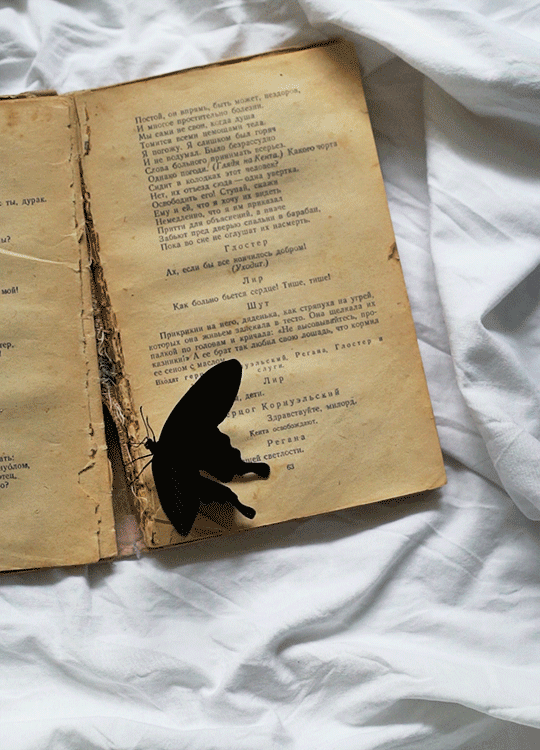
This isnt just fanart, oh no... this is fanart of fanfiction. Maybe its doing an animatic or comic strip of a scene or two of one of your favoirite fics. Maybe its drawing a couple of stills from a go to fic. Cant choose? Then do one still for number of different fics. You like big art? Then make one big peice! Minimum 6xA5, or 4xA4 or 2xA3, or1xA2/digital equivalent.
Multimedia march

Well in this one the only rule is you have to use 5 different media on one page. It could be almost anything, crayons, pencil, paint, papier-mache, modeling paste, collage, felt, pastels, chalk. Hell you could use coffee, makeup, toilet roll, tinfoil, go out and stick some leaves in! Whatever works. Maybe you want to create a scene or a charcter, maybe you want to create abstract patterns have at it. 6xA5, or 3xA4, or 2xA3, or 1xA2
Agraian april
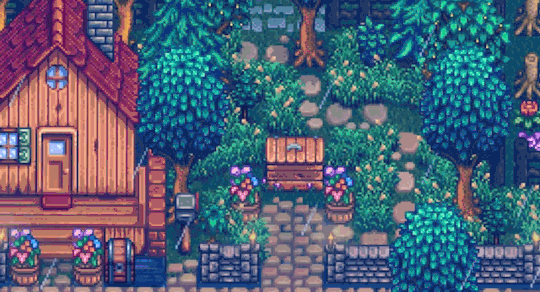
I admit it the only reason this is on here is because ive recently become adicted to stardew valley. Now thats out of the way this could be used to design your own farm where ever it may be whatever it might grow. Is the farm on mars? Or maybe you want to do some studies of real farms, crops or animals. Perhaps instead you'd prefare to draw some foliage trees and flowers. 6xA5, or 3xA4, or 2xA3, or 1xA2
Make a colouring book may

Do you ever look at some of the adult colouring books they have now and are just like wow. Now become them. What ever you want but try and emulate the colouring book style, detailed, simple, traditional, digital doesnt matter as long as your lines are crisp. 1-6 pages.
Journey june
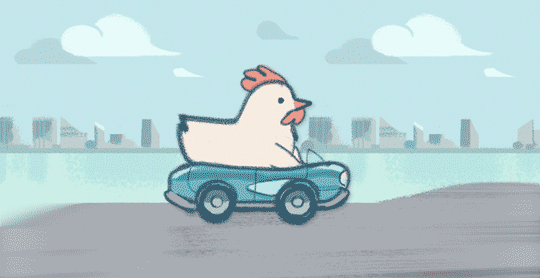
For this one you have to show a journey is it a journey of the self, is it an adventure of a group, is it a holiday? Maybe its a short story, a comic or a series of stills. 6xA5 or equivalent.
Jar dwelling july
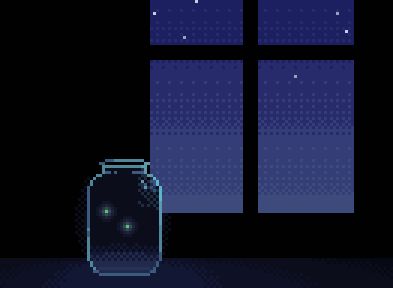
I know this has been done a billion times but i still think its cute. What or who dwells within your jars, is it aliens, a house, a planet a, a monster? Maybe its some potions or a fish or some interdimensional food products. What ever it is there need to be at least six of them, big or small.
Absurd abodes august
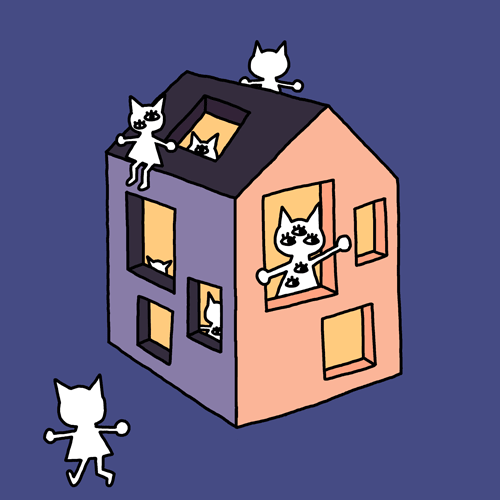
Ive recently got quite into isometric house/room concept designs on pintrest. I want to make some! Is it a witches hut or a multy story tree house maybe its a dungeon that houses a bunch of freindly skeletons. How absurd can you make your abode? 6xA5 or 1 xA3
Shiney september
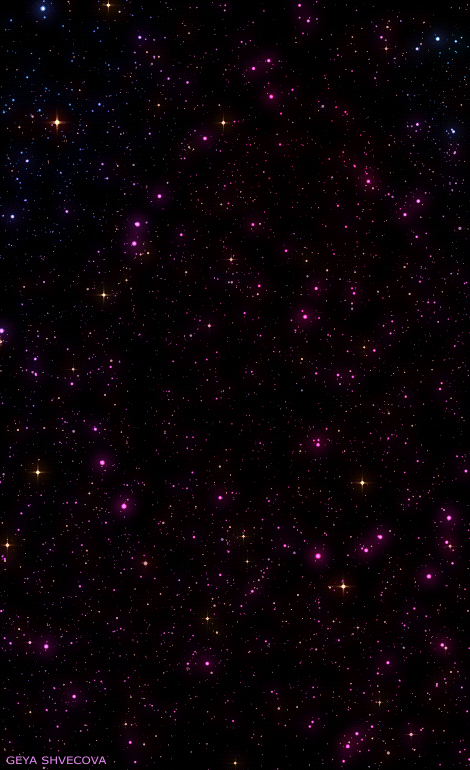
Its time to make some shineys, use whatever shimery shit you got. You got metalic paints or gell pens? Do you have glittery goods? Maybe you havnt thats fine just use tin foil. Maybe you want to create your own pokemon and make them a shiney card, or do you want to paint lots of treasure, or do you want to make things that are definatly not shiney into the most eye watering glitterly mess you can, then this is the challenge for you! 6xA5, or 3xA4, or 2xA3, or 1xA2
Obscure october

I left this one vague so that anyone participating in the anual inktober can work this theme into it, no sense in more stress of an extra challenge.
New naritive november
For this one you need to create a grimm like fairytail of your own invention and illustrate it. Is it page by page or a strip? No length or size options for this one, what ever it takes.
Decorum december
Because i have my own challenge to do in this month ive made the theme easy to integrate into it. For everyone else i supose this is a chance to draw some nobles or royalty some victorians, anything or one with a stiff upper lip so to speak. No size or amount options for this either.
8 notes
·
View notes
Text
On Losing Yourself in a Game, Or, Early Thoughts on TUNIC on PS5

Screenshot via Fiji
There’s something to be said about the proper hypnotic mix of score, setting and gameplay that completely transports you in a great video game.
Tunic — which PC, Mac and Xbox players have enjoyed since March of this year, and hit PlayStation 4, PlayStation 5 and Nintendo Switch yesterday — is one of those games.
A labor of love by indie game developer Andrew Shouldice, Tunic (formerly titled Secret Legend, is at its core an homage to the Legend of Zelda series, while also being punishingly difficult, a’la Dark Souls.
There are two twists to the game which are truly magnificent, however, and endeared me to the title immediately:
The mechanics of the game are explained by an in-game instruction manual, the pages of which you find throughout the isometric landscape of the game. It’s in an indecipherable language, as are most of in game dialogue, but both are revealed to you as you collect more pages. I was reminded of my days importing games for my PlayStation and Dreamcast, trying to make sense of the gorgeous heavy stock Japanese instruction manuals, filled with bright artwork, and using guides printed out from GameFAQs to make sense of it all. Suffice to say, my nostalgia itch was scratched.
The game, while very difficult, includes user toggles for your level of health (even allowing you to be invincible) and the clarity of puzzles in game. This means what can be a challenge for one gamer, can be an inviting and relaxing journey for another. Speaking as a nearly 38 year old man, I turn on my systems these days to be delighted, not to challenge myself, so this was a welcome addition.1
Wrap the package up with some slight but expressive graphics and a very chill soundtrack (which I will be undoubtedly listening to on a loop on future work days), and you have a game which has already made my Best of the Year list.
Tunic is available now on PC, Mac, Xbox, PlayStation and Switch.
Yes, count me in as one of the many who would love the option in games like Dark Souls and Elden Ring to set the title to “Easy”. I miss the era of the GameShark/Action Replay. (And miss me with the whole, “BUT IF YOU GRIND OUT THESE ITEMS THE GAME IS EASY” mess.)

0 notes
Text
Pixel Artist Reviews
1. Eboy

I think Eboy’s work is very interesting to look at, and looks especially three dimensional due to the shadows/highlights and the isometric style it is drawn in - which I think gives it a very iconic cartoon style. The incredible amount of detail in his work adds to the visual appeal, along with the wide variety of colours he utilises in his piece. Some of his work however I think may be a little crowded, although this is a unique part of his style. I also like it due to the wide range of objects/sprites/buildings that he includes in his pieces, as it makes it look like a fantasy world and gives it a lot more life. His work I feel embodies the oxymoron ‘organised chaos’ - the isometric aspect makes everything look neat and tidy but the sheer amount of detail makes it look almost disorganised. Overall, I really like his work.
2. Pixel Art TV

This pixel artist is well known for recreating iconic scenes from popular TV shows in pixel art with a large amount of detail. They mostly use banding shading to add depth and shadow, but also occasionally use dithering for areas when the the transition between colours should be more subtle. I think that using both techniques helps it look especially natural and realistic, therefore I really like it. Another aspect that I like a lot is the use of atmospheric perspective, which is present in the backgrounds of their work, particularly in the mountains. This means that they get more ‘faint’ to create the impression that they’re further away - increasing the depth and realism of the whole illustration- so it no longer feels flat. This can also be seen with the characters who are standing behind each other in rows, which looks very effective. I also really like the use of contrast: the colour palette for the scene is mostly blue, suggesting cold weather yet the fire is drawn in a much warmer palette which makes it stand out very well. Furthermore, the way the fire is drawn makes it look almost alive like it’s moving- another detail that I really admire. Finally, all the subjects in the foreground and background (particularly the dragon and rocks) look very organic and smooth which is especially hard to achieve in pixel art.
3. Waneela

Waneela is a pixel artist who mainly creates landscapes, occasionally with simple animation, which I think gives her work a very peaceful atmosphere, as well as making it look alive and ethereal. Like Eboy, her work has black outlines which make it look very stylised and almost semi-cartoon. She works on a large scale (so even the smallest aspects of her work are composed of lots of pixels) to maximise the amount of detail; this is one of my favourite aspects of her work. I also like how, unlike Eboy, her work is not isometric so doesn’t look as neat and organised - instead looking random and haphazard, which I like as it resembles real life quite well. Another particularly nice feature about her work is her colour usage, which is also fairly realistic, as it is quite desaturated (but by no means boring) which makes it a lot easier to look at for a long period of time. It also adds to the calm atmosphere her work creates. I think her work is beautiful and would like to create similar work myself someday.
4. Paul Robertson
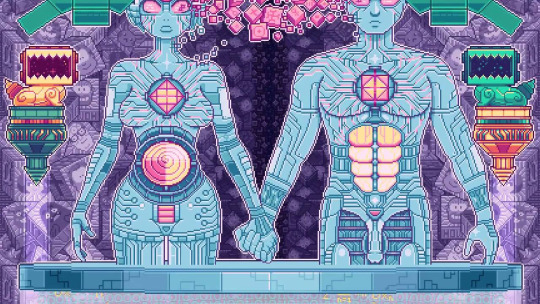
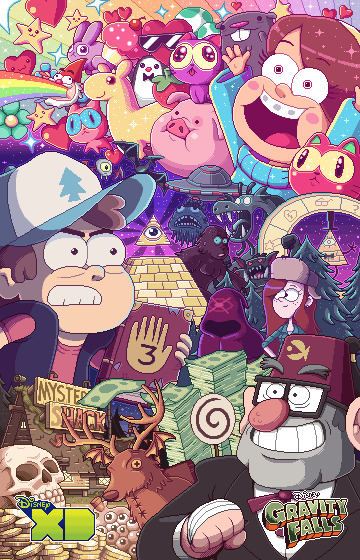

Paul Robertson is a pixel artist/animator who has worked on many projects including the popular TV Show Gravity Falls. His style is very bright and cartoony - all of the items or characters have a dark stroke colour surrounding them which helps them stand out and creates a very clean and simple finish. His main shading style is banding which also adds to the ‘cartoon’ style of his work, although he sometimes uses dithering as well. Like many of the other artists, his work also features a large amount of detail and he works on a very large scale to make sure his characters, objects and settings look as recognisable and true to life as possible, which I think works well! However I think some of his work is a bit too crowded- there is too much detail in some areas that would look fine without any. But other than that I think his work is very intricate and satisfying to look at.
5. Ivan Dixon



Ivan Dixon is a pixel artist/animator who creates simple characters moving in various ways (often bouncing for example). Unlike the previous artists, he works on an extremely small scale - his sprites are only around 25 pixels average width and height. This means that there is unfortunately not a lot of room for detail- but he definitely makes it work. To do this, he uses iconic characters such as Doctor Strange who is easily recognisable due to his outfit and colour scheme. His shading is very minimalist and simple as there is not a lot of space to add it, and his work is quite small so it looks good without! The animations of the characters do not contain a lot of frames but still look organic and enjoyable to watch, especially with the endless loop created. Overall I prefer works that have a large amount of pixels because I like more detail, but at the same time the simplicity of his work is calming to look at.
6. Sword and Sworcery
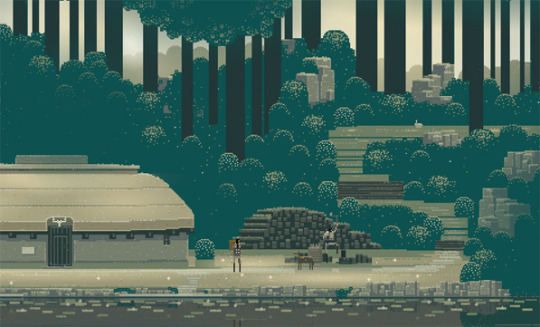


Sword and Sworcery is a pixel art based game. The pixel art itself is lovely, despite not being very detailed (in comparison to some of the other artists) and really conveys a sombre feeling and tranquil atmosphere due to the colour scheme. In a sense, the lack of detail means that none of the artwork is overcrowded, therefore works quite well in my opinion. Like Ivan Dixon, this work is created on a small scale which explains the simplicity of both the landscapes and characters. One of my favourite things about the game’s artwork is the colour palettes that are chosen, as they are quite dull and soft which makes it very aesthetically appealing to me, because I prefer unsaturated colours. I think the brighter details such as the yellow/pink light sources are a very nice addition and compliment the background colours well.
6 notes
·
View notes
Note
Sorry for bugging you, but I just started DOS2 and I know you like that game. Idk anything about this series so this is probably really dumb, but do you know how long ago Lucian used the death fog on the elves? I’m playing a custom elf and trying to figure out when this would’ve happened in his life. 1 year? 5 years? 10? Before he was born?? Lol. Also, do you have any cool tips or things to share that you really love about the game? Thanks and have a good day :-)
Hello there.
Right now I’m at mywork, so I can’t make a deep research on it. But I’ll keep it in mind.
About the deathfog:You know? That’s a really good question. Considering Ifan is aliveand he was there when that happened, it must have been around 20 ormaybe 15 years ago. (I think Ifan is more or less 45 y/o) and whenthat happened, he was a commander, a pretty high rank inside theOrder. But I will research on that shortly.
About Timelines. Well, I’m absolutely lost here.The horrible mess that Larian is with their Lore makes everything horrible.If you checked or played some other games of Divinity, things justmake everything more confusing.
There is a nice“timeline” to have some things a bit ordered, but it is neverenough to be sure with their lore. We need to accept the messy LarianLore as we accept death, I think, lol.http://divinity.wikia.com/wiki/Timeline
Check this too,showing how confused everyone is, specially related with Lucian’stimelinexDhttps://www.reddit.com/r/DivinityOriginalSin/comments/7ekklh/timeline_of_divinity_games/
Lore focused peopleare disappointed to be trolled by Larian. Advise: let the lore be. Don’t ask much, You will find only regrets xD
You are playing anelf. If you talked to Saheila, you know that time is not a thing forthem. Their immortality makes them perceive time like an inconsistent thing. Itreally doesn’t matter for an elf. He can be as old as you want to. (if you want to use this as a lastresource in such mess of time and dates and incoherent lore)
About tips:
Activate Pet Palimmediately, and talk to animals. Every animal you see, talk to them.They are precious, and hilarious, and many times they give yousidequests that can be lore-related or simply silly ones that willmake you laugh.You will laugh. And love the dogs.
Interact witheverything. Even with paintings. There are “talking”paintingssometimes. Use ALT key to highlight interact-able objects.
Explore the maps a lot. It’snever a waste of time, because exploring in this game is morerewarding than in many others RPG. You can find amazing small storiesin the weirdest corners of the map, more insightful perspectives about some chars, beautiful landscapes that may have some chest worth opening, or simply trigger wonderful quests. Like… really. Wonderful. Itotally loved this. And explore caves too.
Always have Lockpick tools, a shovel, and those disarming kits. If you have Fane in your group, you can forget lockpick tools. Bony fingers work like that XD.
Let me be biased as fuck. One of the bestthings is Ifan. Honestly. I love him. And Malady. I’m dying to seethe next game with her.
What I hate though is the isometric aesthetic and theturned-based combat. Honestly. I never was a fan of it, but I did myexception with Torment: Tides of Numenera, and with DOS1and DOS2, and I didn’t regret it. DOS2 is wonderful. It’s prettydynamical for a turned-based game, and they managed the isometric with 360º so fucking well that I dont care anymore. It’s beautiful to see. But yeah, I’m not planning to playit in any other difficult than story, because my no-regret has alimit, too xD
5 notes
·
View notes
Text
Here it is, My Top 5 game logos of E3
There were a lot of surprising showings this year it was almost too much to parse. All of the hype-inducing trailers and teasers were full of little Easter eggs meant for gamers to slowly piece together clues as to what game they were watching. But there was always a moment at the end of each clip where the screen faded to black and a bright and shiny logo appeared. Confirming your suspicion that, yes, they are bringing back Battletoads. These are my favorite logos from the conference.
5. Tunic

Tunic is an adorable isometric rogue-like style game, developed by Andrew Shouldice, in which you play as a small warrior fox and fight your way through droves of enemies while solving puzzles and traversing the world’s box-like terrain. Throughout the trailer shown at E3 there were messages written in strange language foreign to the viewers like the writing shown around the logo above. This seems to be in line with the trend in these games where the main character speaks a language that no one knows, further driving home the idea that we have traveled to a mysterious world far away. The game’s art style is beautiful yet simple and to me everything about this logo really embodies that.
Release date: TBD Xbox One, PC
4. Tetris Effect

This one was a surprise to me. Not that there is a new Tetris game coming out but more of the overall beauty of it. Tetris is a game we all know, and a game I’m sure we’ve all played or experienced. The Tetris Effect, as stated in the actual E3 trailer, is a reference to the psychological phenomenon of the same name in which people who played tetris for hours on end found themselves thinking of ways to get objects in their daily lives to fit perfectly together and even reported hallucinating blocks falling down from the sky. In other words the game blended with their reality. Pretty cool concept to base your VR game off of, Sony. The logo pulls from these themes by blending real world imagery into the blocks shown in the trailer...or wait...am I just imagining that? Have I been playing too much Tetris?!?!?!
Release date: Fall 2018 PS4, PSVR
3. Devil May Cry

I’ve always wanted to wear a duster coat. But I’m short, kinda chubby and it’s like Summer. Devil May Cry has always had a very campy aesthetic that I think is welcomed by the game’s hardcore fans but a lot of gamers in the west seem to be into a more serious tone. That being said I FUCKING LOVE DMC. It’s over the top in all the ways it needs to be and when this was revealed I jumped up on my couch like Tom Cruise in an outdated reference. The game picks up where the 4th installment left off, following the plucky protagonist Nero who apparently has set up his own “demon hunting agency” with an equally plucky Southern woman who claims to have built Nero’s new arm. The wing artwork on Nero’s back could maybe have served as a Roman Numeral V instead of the 5 maybe but hey, I’m not a graphic designer. I do like blue and red as a nod to Nero’s arm in DMC4.
Release date: Early 2019 PC, Xbox One, PS4,
2. Sable

Did you guys watch the PC Gaming show? There were some real gems in that conference. Sable is one of them. Sable looks to be an open world exploration game set in an alien desert landscape. The trailer captures this gorgeous world as a girl, presumably Sable, as she rides her hover-bike looking vehicle through her world. The art style is akin to that of the cell shading of the Borderlands series and reminds me of Matt Fraction and David Aja’s 2012 run of Hawkeye for Marvel Comics randomly. The mysterious symbol centered behind the title coupled with the beautiful desert sunset is giving me some mystical Mad Max vibes and I am digging it. backdrop I am a huge mark for exploration based games so I am very excited about this one.
Release date: 2019 Xbox One, Microsoft Windows
1. Cyberpunk 2077
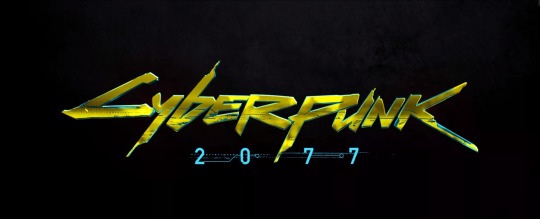
Been a long time coming but last month we finally got to see CD Projekt Red’s latest with the trailer for Cyberpunk 2077. I’m not even sure what to say about this game and its logo etc. other than the fact that it looks fucking rad. I have been a huge fan of the Cyberpunk genre even though it never really got the same kind of resurgence that Steampunk has. Films like Akira and Ghost in the Shell are prime examples of Cyberpunk done right and of course Western films like The Fifth Element and Blade Runner have similar influences as well. Cyberpunk 2077 takes place in the same world as the tabletop RPG Cyberpunk 2020 which has a similar logo as shown below.
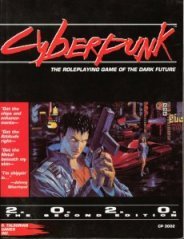
The absence of any sort of people in the logo for Cyberpunk 2077 is an important choice I feel because the developers have stated that the main character is completely customizable and the game takes place entirely in first person. Unlike the Witcher Series which was a 3rd person RPG following the story of Geralt of Rivia. I look forward to exploring all of Night City and playing as a buff cyborg man with a large laser gun.
Release date: TBD (hopefully soon)
THESE LOGOS ARE ALL COOL
#e3 2018#this was fun to write#ps4#xbox#pc#video games#gaming#aesthetics are important#logos#sony#microsoft#nintendo#tunic#cyberpunk 2077#devil may cry 5#tetris effect#sable
4 notes
·
View notes
Text
Brigador and the Art of Sky-High Storytelling
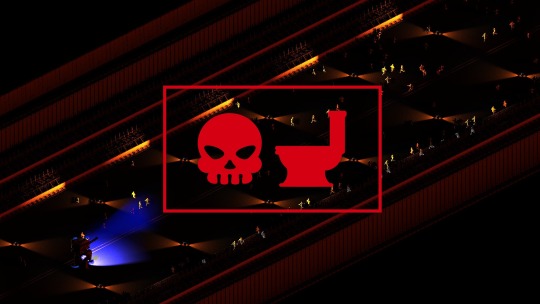
“GREAT LEADER IS DEAD. SOLO NOBRE MUST FALL.”
The first spoken words of Brigador, synthesised through a muffled speaker and emblazoned on-screen in bold, unadorned, searing red letters, are all the exposition it strictly needs: it is a time of great upheaval on the frontier colony of Solo Nobre, and you, with your ten-ton armoured mercenary mech, are here to do some heaving. Narrative and lore are strictly confined to downtime; to dense slabs of text filed neatly away in the codex, to be optionally purchased and read at one’s leisure. There’s no place in the combat for direct storytelling, between the rumbling of diesel engines and the whip-crack of electromagnetic slugs, and even if there was, it’d be little more than poorly embellished justifications for “go here, destroy those buildings, go there, destroy those units, leave.”
But to dismiss Brigador as pure context-free action is to fail to recognise how it speaks. When we think of environmental storytelling, we think small. We think of unconvincing graffiti on crumbling walls, half-finished meals, abandoned chess boards, desks piled high with papers, carefully-placed bookmarks, downed tools and barricaded doors. We think of skeletons in compromising poses, and trails of blood that laugh in the face of a bucket of bleach. Personal stories are made when people leave personal imprints, as taken to extremes by, say, Fullbright’s shtick of giving you a whole night to rummage through your family’s household belongings unfettered. For this very reason, the most popular examples of experiences with environmental storytelling are largely those that enable you to get up close and pick it apart, preferably without being too rushed. There’s a special kind of intimacy in it, almost voyeuristic, as you sift through the documents of a person who would certainly have objected to your intrusion if they weren’t lying slumped against a nearby desk with an alien birthing cavity where their guts used to be.

Brigador is the antithesis of that. Its sky-high isometric viewpoint, panning silently over the streets, gives you little such insight into the fine details. You can’t tell the story of a person from up here—at least, not easily—but you can tell the stories of people. And war is all about people, collectively; people fighting, people fleeing, people dying. Stories of lone figures, unless they hold huge power or significance, are swept away in the tide of shared tales, told through numbers rather than poignant letters to mother. You can pluck lone individuals out, humanise them and piece together their fate, but chances are that they were just one of a hundred, or a thousand, or a million people in the same boat, going through the same motions. Those collective motions, and their collective effects, are the ones that Brigador’s environments make us privy to.
One major target objective recurs through your missions: the orbital guns. Solo Nobre’s surface bristles with these skyward-pointed cannons, designed to obliterate any spacefaring aid that so much as entertains the thought of helping liberate the colony. Naturally, they’ve got to go, but it’s the way they impose on their surroundings, irrespective of context, that fascinates me. Taller than a city block, frequently ringed by sheer defensive walls and expanses of flat asphalt, their incongruousness isn’t just stark; it’s deliberately exaggerated. They invade the space around them, like alien landing craft, making no effort to compromise or integrate no matter where they are. To us, the player, they drive home the extent to which recent rampant militarization has dominated the lives of Solo Nobre’s people. What’s it like to have one of those things in your back yard? On your block? In your cemetery? Looming threateningly, a permanent reminder that the entire colony was, and is, ruled through military force. It’s all too easy to imagine them just springing up one night in a flurry of jackbooted activity, confusing and unnerving locals who understand nothing of the political situation, only that they’re now the unwilling neighbours of the biggest, juiciest, most explosive target in the district.

Most of Solo Nobre looks as if it sprung up overnight, to be honest. Many of the maps have a decidedly frontier air to them, sharply contrasting undeveloped wastelands with industrial and agricultural estates—or outright shanty towns, on occasion—and even developed zones are often distinctly utilitarian, as if the first construction efforts focused solely on establishing the functional basics and nobody’s had a chance to do a second pass. Why is that important? Because it means that whatever worldly influences went into the colony’s initial construction—the decisions, the constraints, the goals—are still relevant. Spaces change meaning over time; they get repurposed, recontextualised, rebuilt, and in the process the original intent of their structure gets muddled. Solo Nobre hasn’t had a chance to get especially muddled yet: everything on the landscape feels as if it has a current, relevant reason to be there. The story of the colony is coded into its infrastructure, fresh as the first coat of gunmetal-grey paint. Roads, buildings, fences, zones.
And wouldn’t you know it? That’s the part that you, with the omnipotent eyes of a SimCity mayor, are perfectly situated to deconstruct—in the analytical sense, I mean. You see the way the streets are laid out and the way blocks are divvied up; the way patterns and biases have formed in the overarching organisation—or lack thereof—of the urban sprawl. What becomes noticeable almost immediately is… lines. Often games with isometric grid presentation will seek to break up the grid; to introduce chaos and noise to obscure the perfect, infinite parallel lines that give their environments such an artificial, manufactured air. Brigador relishes in it. Brigador loves the grid. It goes out of its way to propagate unbroken, arrow-straight walls and roads for miles. They speak of an ultramodern, efficient, painfully austere development process; the kind that rolls out state utilities like a titanic machine, paving anything that stands in its way with no regard for landscape or lives. To be more exact, they make it clear that they’re not the product of democratic civil planning, but of orders from on high, carving up and commodifying the colony like the centrepiece of some debaucherous banquet. In a more striking fashion than any graffiti decal or audio log, these pieces of Brigador’s public infrastructure illustrate the disconnected, totalitarian whims of its administration. A casual flick of a cufflinked wrist and suddenly a neighbourhood is living in the shadow of five storeys’ worth of reinforced concrete. Are you in the way? Time to relocate, Mr Dent.
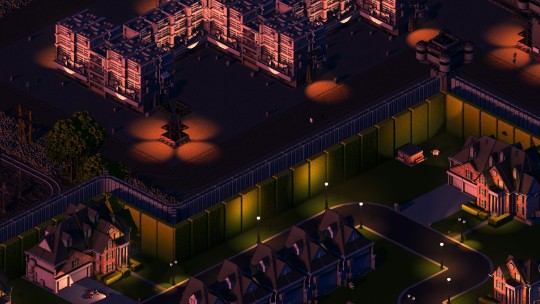
But apathetic architecture isn’t the same as thoughtless architecture. One of the clearest intents behind much of Solo Nobre’s urban planning is its concerted effort to distance the haves and the have-nots, coddling the former and shutting out the latter. Cramped slums frequently sit side-by-side with idyllic American Dream suburbs, divided by district walls—once again, we return to walls—that have been coated on one side with improbably tall hedges, so their viewers may entertain the fragment of an illusion that all is well in their slice of freshly-mowed Eden. Such proximity between the wealthy and the poor suggests that space is scarce on Solo Nobre, but not so scarce that the former can’t afford to have sweeping lawns and tacky, towering neoclassical McMansions. You could be forgiven for starting to wonder if something’s wrong with the scale, when your titanic walking weapons platform that could put a foot through a tower block suddenly has to crane its neck to shoot over a family home, but no—it’s just another way of illustrating the yawning gulf in privilege to your eye in the sky. One mission takes you out onto the green expanses of a country club, which—along with a sizeable occupying force, obviously—also features imposing gun turrets built into the landscape, poking out the top of more hedge-covered fortifications. Why would a golf course need such entrenched defensive measures, in what we’ve been led to believe was a relatively peaceful time? They can only have been a means of deterrence; of scaring away the riff-raff and making the privileged feel secure, without the excessive use of unsightly district checkpoints and barricades.
Yet even with this sweeping disparity, there’s a common thread in Solo Nobre of humanisation of oppressive spaces. Between hulking pipelines, paved concrete expanses and endless bleak industrial estates, there’s mounting evidence that Great Leader’s priorities were not the well-being of his workers, but here and there are tiny, isolated reminders that people still manage to engage in recreation. A single basketball hoop at the end of a loading dock, lined by rows of identical storage units; a children’s climbing frame in the middle of a muddy plot, ringed by skeletal steel pylons; a lone fifties-style diner, complete with a scattering of those cheap white plastic chairs, bleached by the halogen glow of a communications mast. They’re fragments of lives, not destined to be pieced together into a cohesive narrative, but to simply remind us that even in the city’s coldest, most utilitarian corners, people are not drones. Until now, we’ve focused on tales of communities and collectives, but to view people only in the plural like this is to risk treating them as so many trivial organisms under a microscope, always moving in tides, their individual impulses lost in the swarm. It’s details like these that keep us grounded, so to speak, even while gazing down at the sprawl.
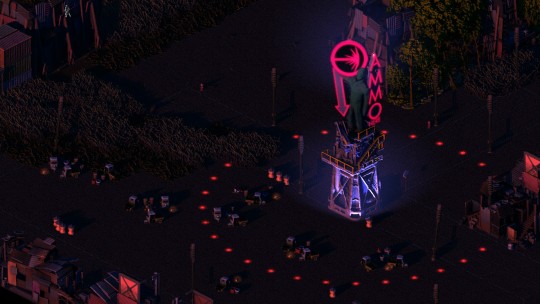
That’s all just history, though, innit? That’s stuff that happened over months, years, decades even. But some of the imprints on Brigador’s landscape are more temporal, left by events far more relevant to your current mission. Solo Nobre’s liberation takes place over a single night—or so it’s implied—and while you may be the first to fire a shot, you’re certainly not the first to make a move.
Traffic. It’s the traffic. You could initially be forgiven for thinking that the streets of Solo Nobre, despite their spaciousness and high standard of upkeep, don’t seem to be getting a lot of use; they’re utterly devoid of active civilian vehicles, trodden only by the assorted war machines of your opponents. Brigador doesn’t feature non-combatant units—other than the tiny raincoat-clad civilians who mill around helplessly until being crushed carelessly underfoot—but nevertheless, you’ll soon find remains of traffic jams around the maps: gridlocked, bumped-to-bumper, clearly long-since abandoned when it became apparent none of it was ever going to budge an inch further. Why would it be so tightly packed, and trail so far back, in a city where the highways are so wide that you could triple-park an interstellar freighter across one without making everyone late for work?

Once again, placement is the key. Brigador’s abandoned traffic isn’t randomly distributed, but concentrated around particular points. Lanes upon lanes of gently cooling automobiles are regularly found clustered in front of district checkpoints, around spaceports, even outside train depots, seemingly stopped in their tracks. A picture forms; a picture of a reeling state power rushing to regain its faculties, crack down on sudden unrest, minimize chaos. Of people hearing the news, sensing the forthcoming conflict, choking the roads with their attempts to flee. Of the two forces colliding in the lengthening shadows of a checkpoint, a cacophony of horns and furious shouts assaulting a grim military police barricade. Evacuation efforts scuppered. Deadlock. Until the Corvids turn up in their scrapyard siege engines and flatten a few city blocks, obviously.
But the exodus of Solo Nobre isn’t a complete failure. As your trail of destruction spirals out towards the edges of the colony, from the urban sprawl to its inevitable, oft-forgotten by-products, signs of relief begin to manifest. Nestled up against neglected pipelines and crumbling walls are clusters of blue tents—the kind of blue they only ever use on tarpaulins and concert port-a-potties—propped up with flimsy poles, dulled by the mud of the wastes. They’re ramshackle, disorganised, and frequently located in spots of dubious tactical importance, all of which suggest that while the materials might come from a Loyalist source, they’ve certainly not been set up under any kind of military coordination. Indeed, their most unifying quality seems to be that they’ve been pitched out of the way of populated zones—presumably by people who have had quite enough near misses with cluster mortar strikes for one night. These are camps set up by refugees, no way around it; people fleeing the power struggle, one way or another, trying to hole up somewhere so backwater that nobody would waste time fighting over it. Alas, as the presence of you and your enemies implies, they’re disastrously wrong. But that can’t be helped now, can it?

I suppose the only thing left to wonder is what, if anything, Brigador hopes to make us feel with all this effort. It leaves features on the landscape to tell us that these things happened, but despite our inarguable involvement, never ties those events back to us; never blames us for displacing innocent people, destroying their homes and gibbing them in the streets with careless cannon fire. In a game that encourages you to look at your environment in terms of little more than the cover it offers, it’s easy to tune out such ghastly side effects, particularly when the only feedback you get from razing civilian buildings to the ground is a miniscule bonus—yes, a bonus, perplexingly—to your end-of-level payout. No guilt, no joy, just a matter-of-fact occurrence. But as a mercenary, fighting first and foremost for a sodding huge cheque, perhaps it’s only appropriate that the only stimulus you get from needless destruction is an insignificant increment on your score counter. What better metaphor could there be for the faint flicker of acknowledgement, cold and distant as the shores of Titan, in a mind focused entirely on the task at hand?
It’s not easy, communicating using only the features that are visible to passing airliners, but Brigador plays to its strengths. It focuses on sweeping trends and dramatic shifts—which are, of course, common during times of unrest—using them to speak of the effects of dictatorial regime and violent power struggles, but scatters around visible one-off details too, as humanising fragments for those who stop and take notice. Nobody could ever describe it as an epic narrative tour-de-force, but I find it to be a fabulous example of working within limitations; of understanding how sociopolitical transformations can embed their effects in the landscape, and how we can read them back again—so long as they aren’t demolished by a Killdozer first, anyway.
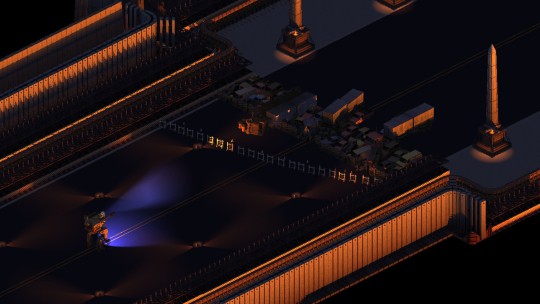
156 notes
·
View notes
Text
GAME BOY ADVANCE BUYERS' GUIDE AND MY PERSONAL FAVOURITE GAMES

The Game Boy Advance or GBA was released in 2001 and was the follow up to the successful Gameboy Color. The GBA has three different models, the GBA original, GBA SP (2003) and the GBA Micro (2005). We will look further into the differences later. The GBA falls within the top 10 selling game consoles of all time, a list which also includes the original Game Boy and the Nintendo DS. Nintendo own hand-held gaming and the Game Boy Advance SP model specifically is one of my most played retro consoles.

The original model is a landscape layout (with buttons either side of the screen), rather than the traditional Game Boy portrait layout, with the buttons below the screen. It is a 32-bit system and shows a significant upgrade to to GBC, although without a light on the screen I found it quite disappointing when I had my original many years ago. The original GBA takes 2 x AA batteries. Probably the best feature is that it’s fully compatible with all of the original Game Boy and GBC back catalogue. The first revision GBA SP I feel improved nearly every aspect from the original. It’s rechargable via a power cable, has a front lit screen (which at the time made it much more playable), a folding laptop-type design for more compactability and also works to protect the screen. One downside is that the SP model doesn’t have an AV port for headphones. The 3rd model came in the form of the GBA micro and I feel this was a disappointing release, it has brighter and a much more powerful backlit screen but its tiny form factor is too cramped for even the smallest hands. It also ditches the backwards compatibility of the previous models. The micro has clip-on plates for customisation. At a similar time to this Nintendo also released another GBA SP (model AGS-101) with a fantastic backlit screen similar to the GBA micro and the soon-to-be-released Nintendo DS. This is a great system for fans of the Super Nintendo, I never owned a Super Nintendo but, while collecting for this system, I discovered that many of the games from the Super Nintendo and even the NES saw releases on the GBA. It was a simple way for me to access some of the classics from those previous released consoles. My personal recommendation is that if money is no object then the GBA SP (model AGS-101) with its amazing screen is the one to get, but it is rather expensive. For those on a budget (like myself), I would recommend buying a GBA SP (model AGS-001), as they are more readily available. This system will run the whole Game Boy game library. Buying a DS Lite has the benefit of having an amazing backlit screen similar to AGS-101 and is able to run both original DS games and is backwards compatible to the GBA games library only as well, so that is another option.

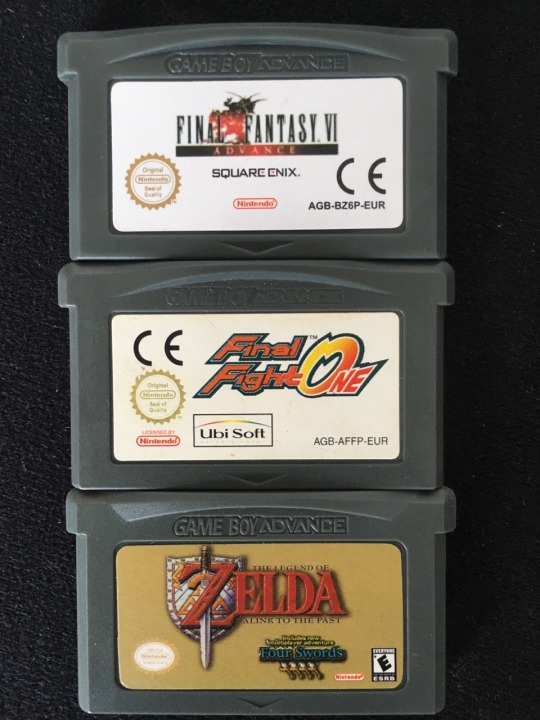
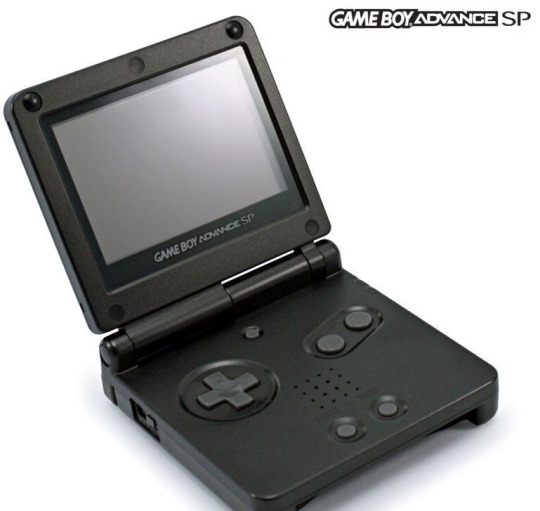

The GBA had a ton of both first- and third-party accessories. Some of the highlights for me include: the Worm Light, which was essential for playing on the original model; the Link Cable in order to access multiplayer features; and the GameCube-Game Boy player, which works similar to the Super Game Boy and allows you to play GBA games on the big screen. All of the models discussed above were available in many different colours and artwork styles, which for a collector may mean that you have an interest in picking up multiple systems. One of my favourites is the classic NES-inspired GBA SP, which I would love to have, especially with a model 101 backlit screen 🤤.
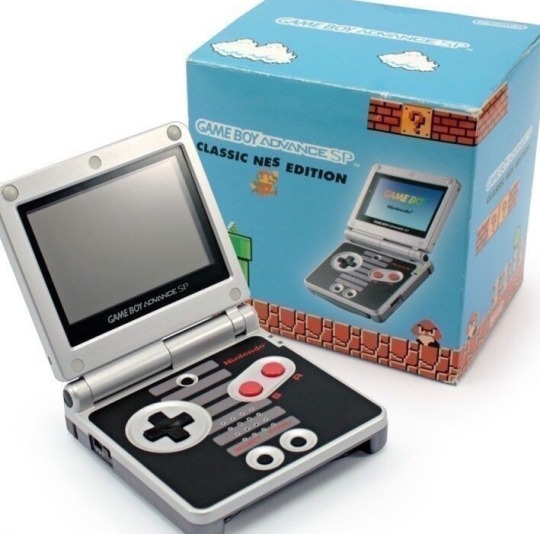
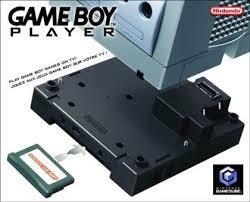
Another feature that is easily forgotten is that the GBA adds a limited colour pallet to Original Game Boy games; you can use the direction pad on the boot-up screen in order to choose different ones. Shoulder buttons have no use while playing Game Boy and Game Boy Color games but they can be pressed in order to have the original aspect ratio or to stretch the image to fill the GBA’s larger screen. I personally don’t collect boxed GBA games as it’s too expensive.
Here is a brief run though of some of my highly recommended, which I would recommend to anyone who is interested in starting a collection for this amazing console:

Tony Hawk’s Pro Skater 2: A very well-made game that plays exactly the same as the console versions of the beloved series but from a isometric view. Great way to play a bit of Tony Hawk on the go.
Sonic Advance: This is a fantastic Sonic game made by Sega for the GBA. Who would’ve thought it? Sega’s prized mascot on a Nintendo system. This game has all the speed and gameplay of the best sonic games. 2D is where sonic games are at.
Advance Wars 1 or 2: Either or both. Many long hours can be consumed by this game. It’s a turn-based tactical war game featuring cartoon-style characters and animation. Both simplistic yet technical with a fair learning curve.
Mario vs Donkey Kong: A successor to both the arcade and original Game Boy game Donkey Kong. This is a fantastic-looking puzzle game with tons of character and variety.
Warioware, inc. Minigame Mania: For anyone who has played any Warioware game, you will know exactly what this is all about but, for those who don’t, it is a super addictive game that involves loads of wacky, quick-fire mini games and you have to scramble to work out what to do in quick succession. One of my favourites.
Metroid Fusion and Zero Mission: I had to add both here because they are both masterpieces. Fusion sees Samus face a new virus threat called X while evading a fully powered evil clone of herself. It is a direct sequel to Super Metroid but has a more linear approach; this has caused some criticism but, as my first ever experience of a Metroid game, I appreciated its structure. Zero mission is a well crafted remake of the original NES game (which is also featured as an unlockable) and is much more in line with the open world, which fans of Super Metroid will appreciate. It could be argued that either of these are the best Metroid game ever made.
Castlevania Aria of Sorrow: This game does everything perfectly. It may not be the first Metroidvania-style Castlevania game (that honour would go to one of my absolute favourite games, Symphony of the Night) but I would happily accept any argument that says it does it better. It is perfectly balanced and the story is great. The main character, Soma, can absorb the souls of enemies in order to gain magical abilities and attacks. This was first introduced here but is also felt today in the form of Shard’s from the game’s creator Koji Igarashi in his latest game Bloodstained Ritual of the Night
Games not in my collection that I am also on the hunt for are:
GunStar Super Hero’s, a sequel to the Megadrive classic.
Contra advance.
Metal Slug advance.
I hope you have enjoyed this month's blog. It is a topic that I have a huge passion for and I highly recommend starting any game collection with this system. There is a ton of amazing games and even a rather big collection can take up very little of your space at home. Until next time. 🎮
1 note
·
View note
Text

A cool #isometric #architecture #illustration by Grant Abernathy (@abz_fineart) of a wooden cabin with a bit more to offer than the typical amenities. After a long day of hunting and trapping up north in the Canadian coniferous forest, you come home to clean and cook your catches and eat some grub. But after that, life can be pretty dull... or is it? What you need is a luxury cabin from Iso Metrics! Let everyone else think of you as a rugged, wilderness-loving mountaineer, when in fact your "small" cabin is equipped with the best electronics and devices for entertainment that money can buy... including an enormous flat screen TV. Grant did a great job on the wood grain textures (man, there's A LOT of wood in this drawing. Isn't there?), and the details on the furniture, landscapes and cross-sections. I know they are small details, but I like that Grant included the little area of the stream bed next to the house, and the spacing for insulation and structural in walls in basement. Really great piece all together, Grant! ::--🏡--:: #architecturedrawing #architecturaldesign #penandink #cabin #woodgrain #architexture #blackworks #flatscreen #adventuring #architectureart #sketching #cabininthewoods #secrets #abz_fineart [Original Post: https://www.instagram.com/p/BWLTeHSFk4R/; Artist: @abz_fineart]
#architectureart#secrets#woodgrain#cabin#isometric#architecturedrawing#abz_fineart#flatscreen#cabininthewoods#adventuring#penandink#illustration#architecturaldesign#architecture#blackworks#architexture#sketching
2 notes
·
View notes